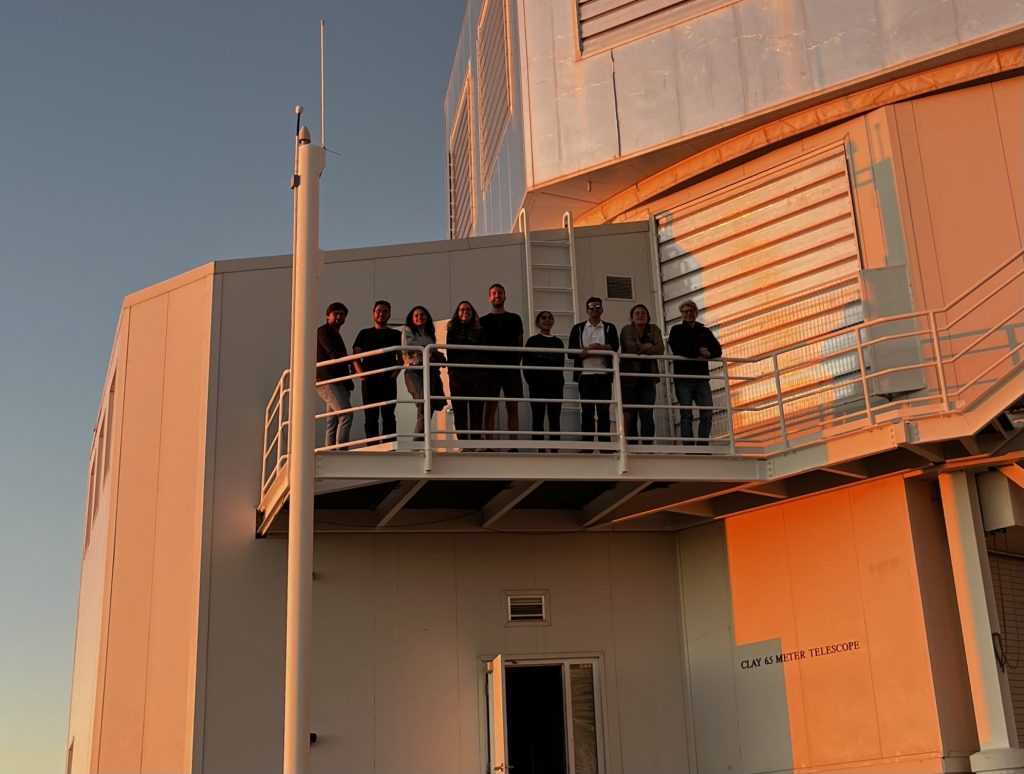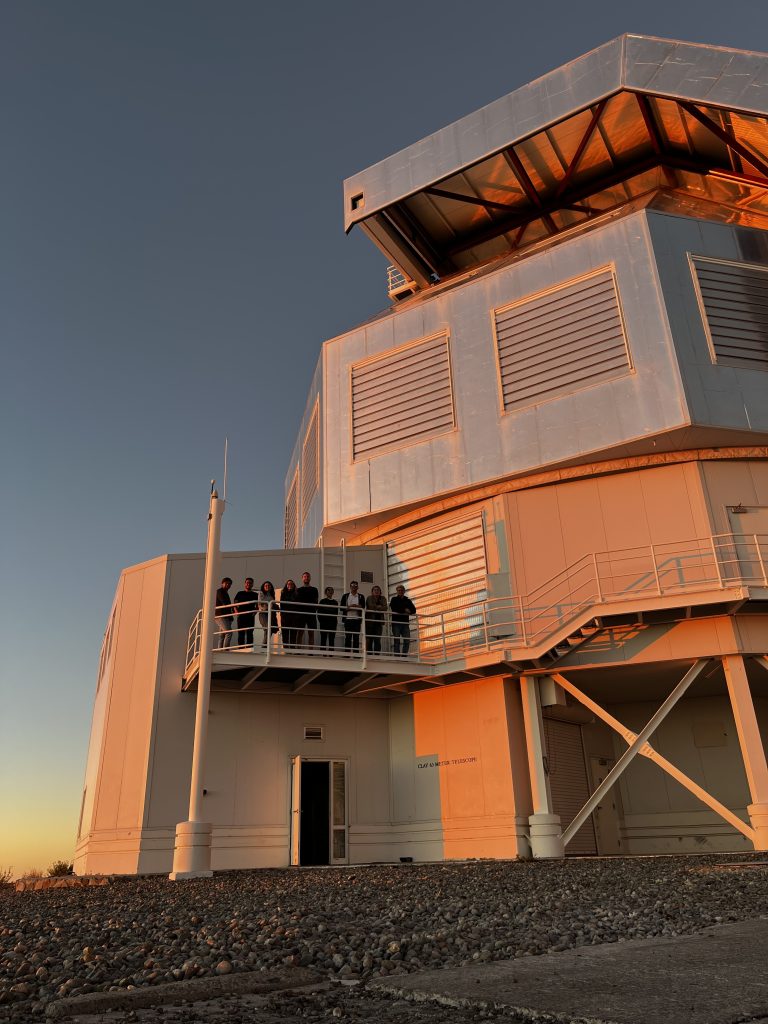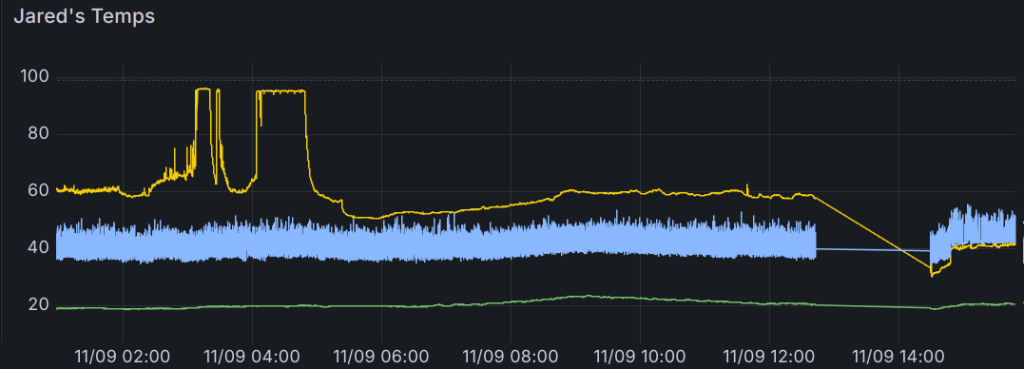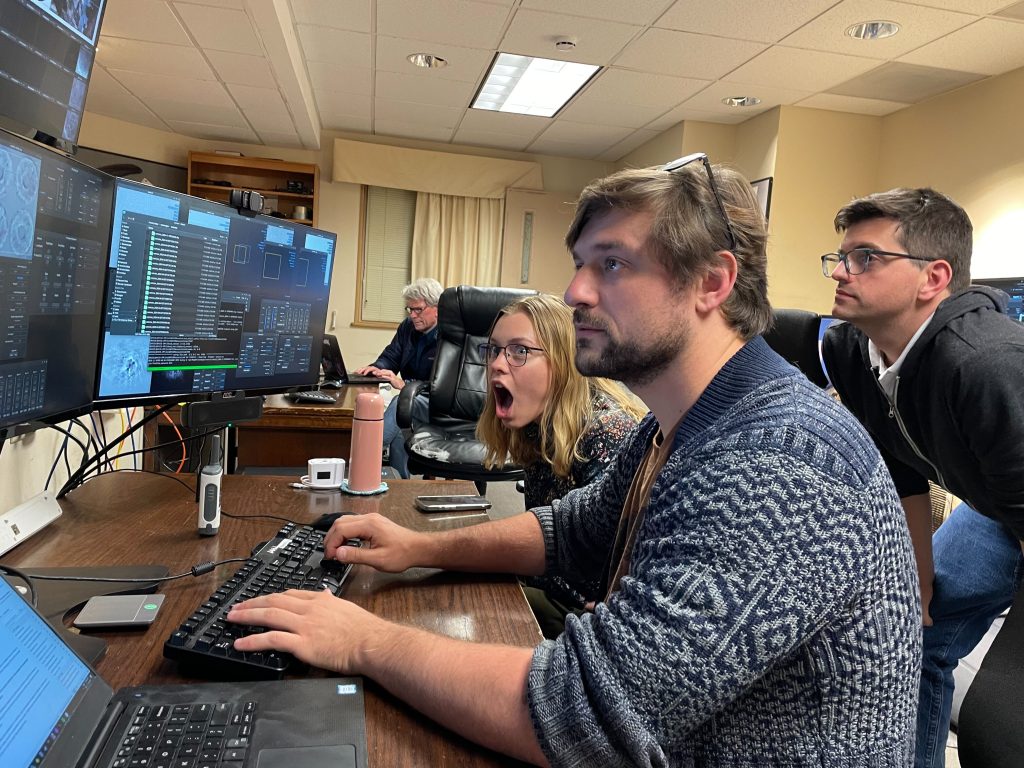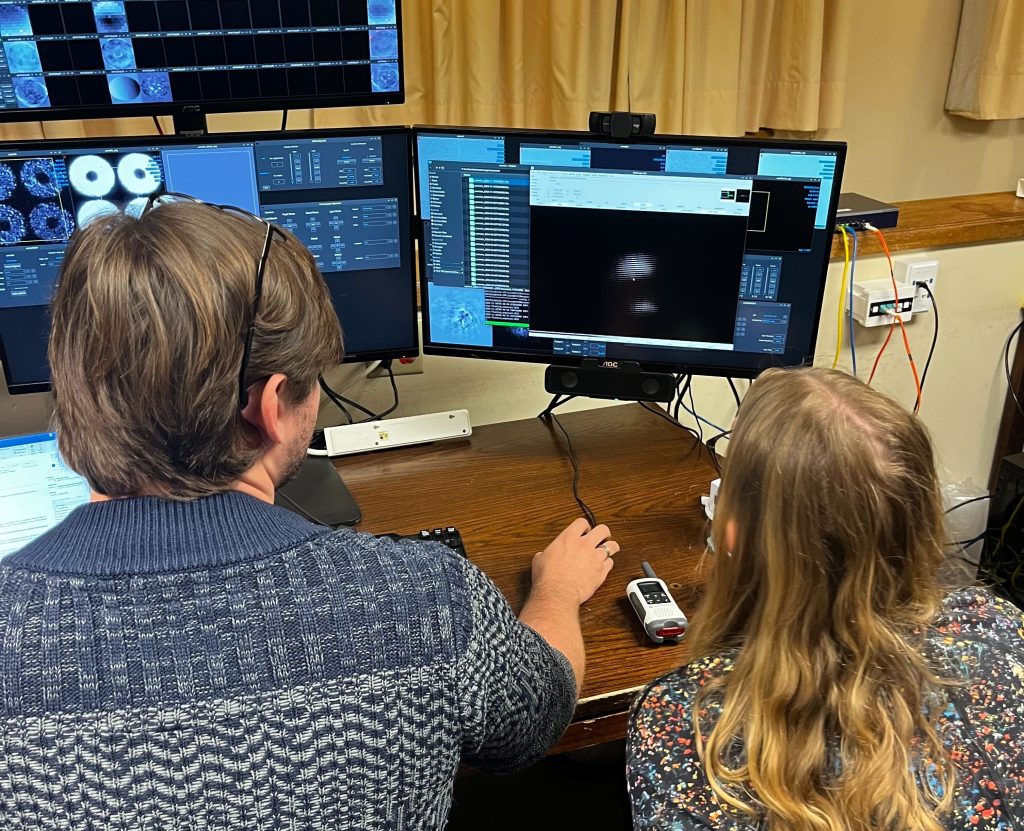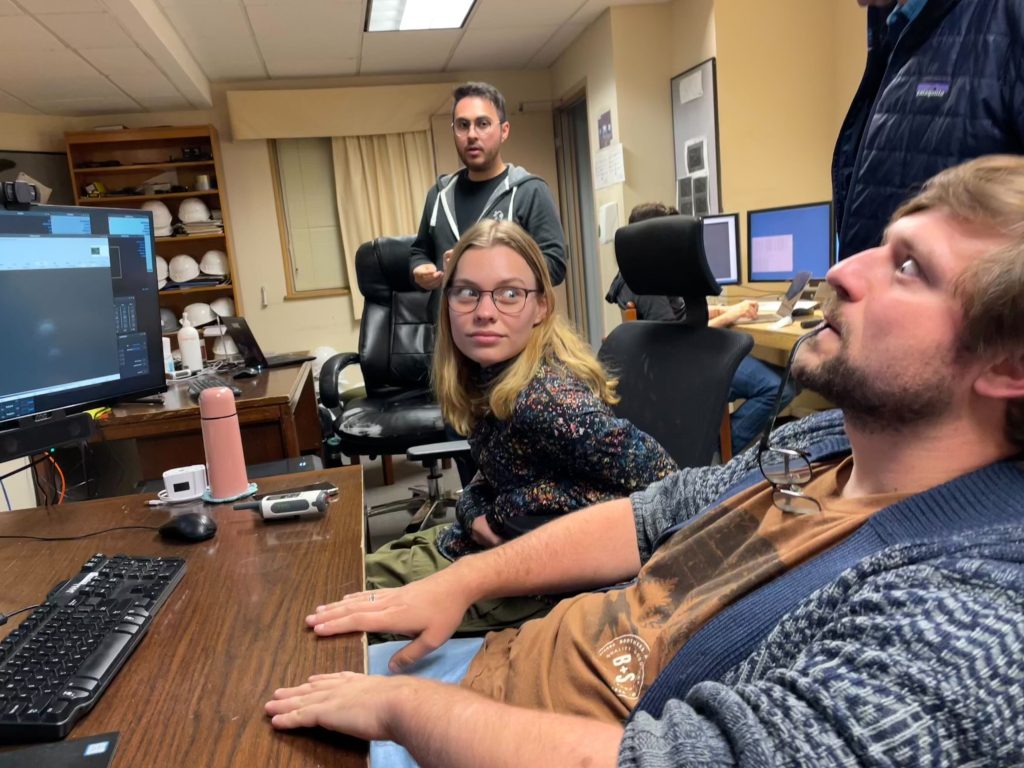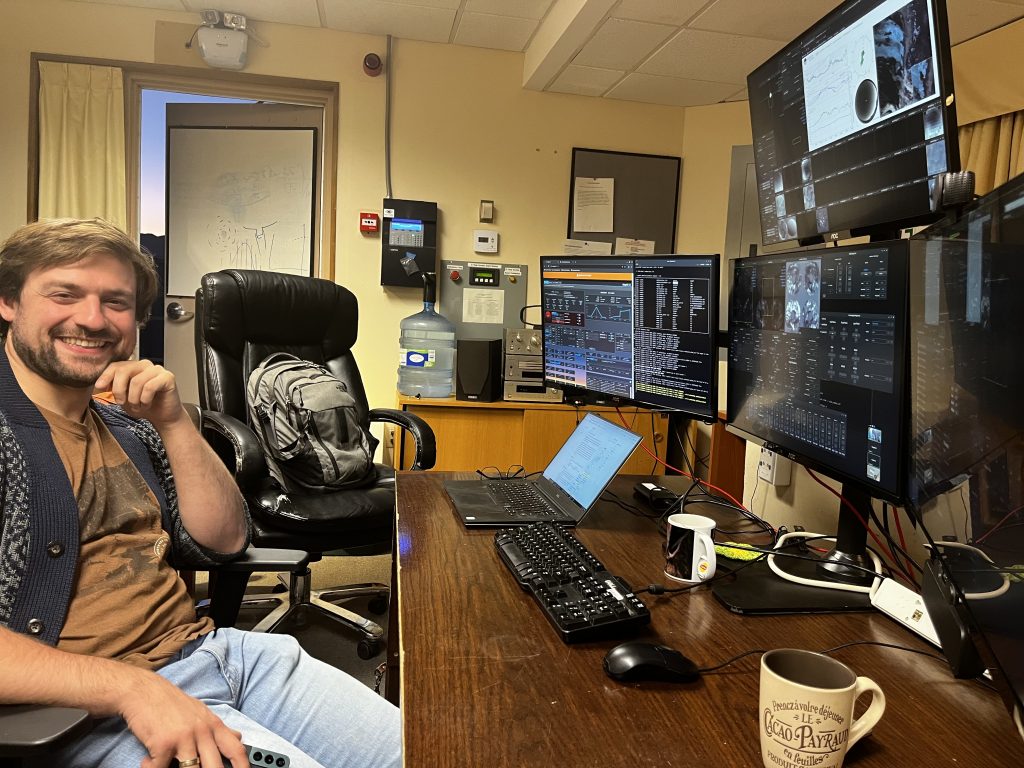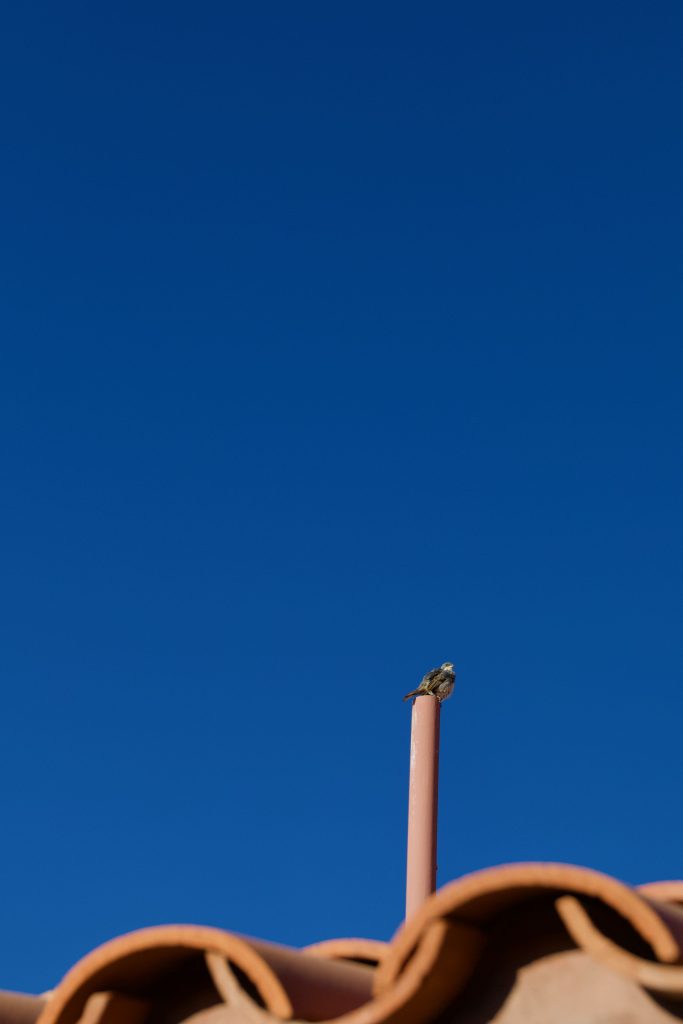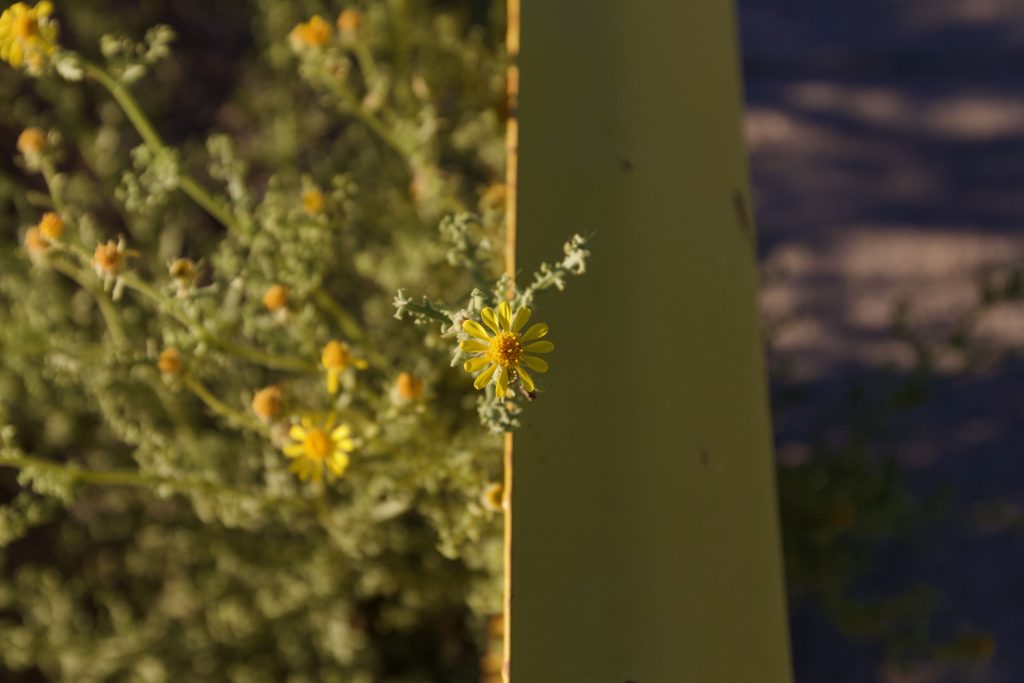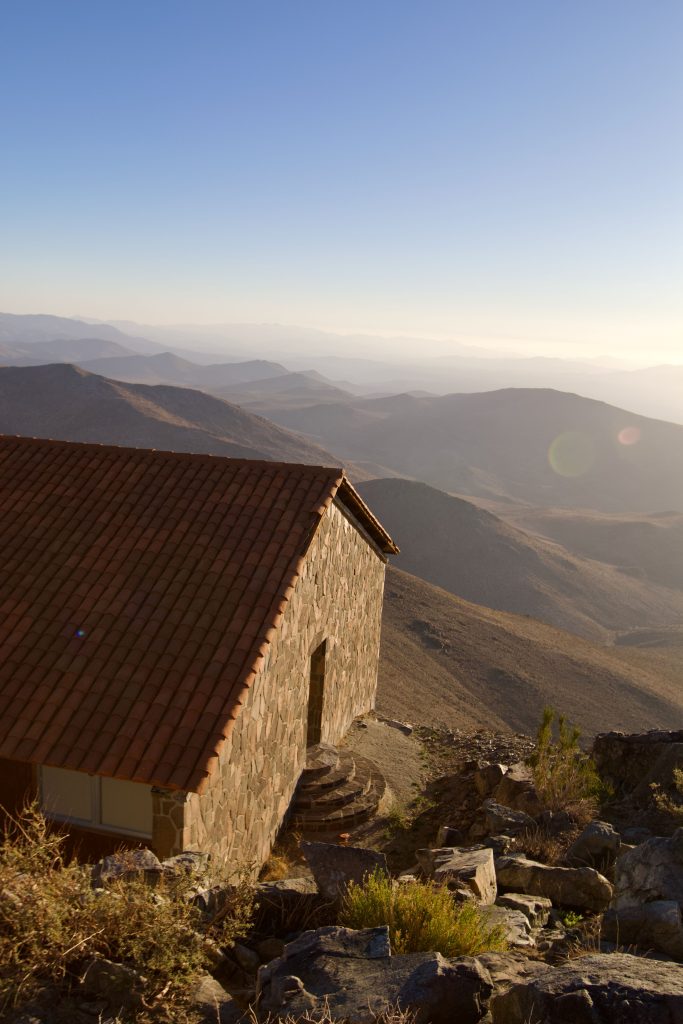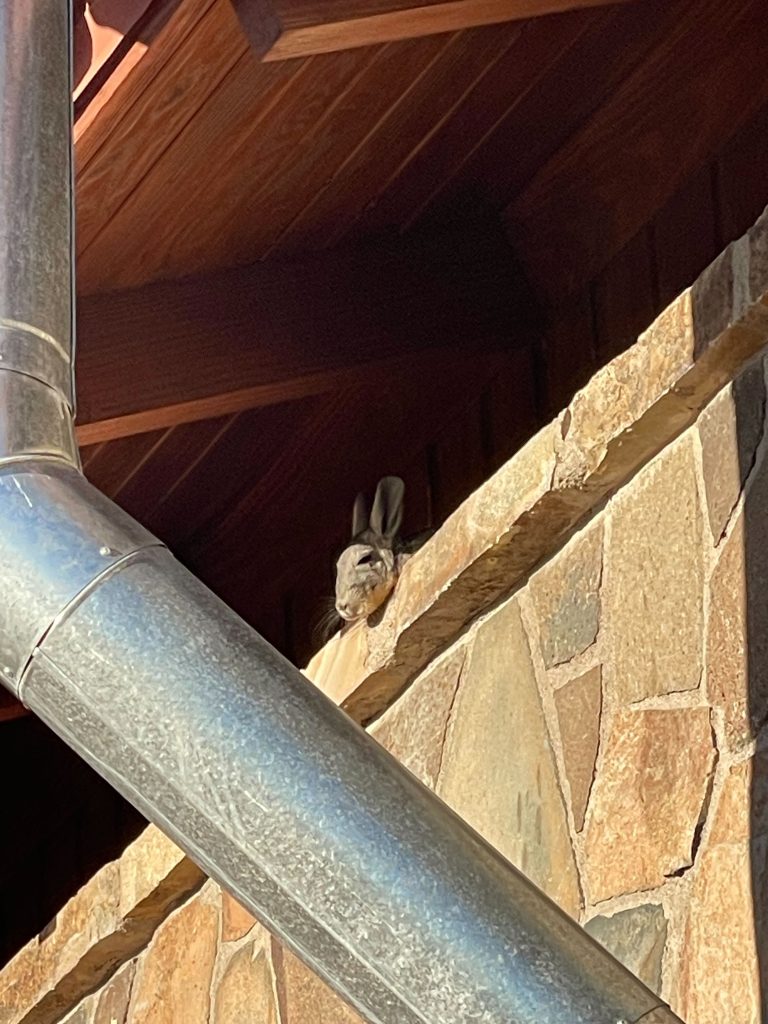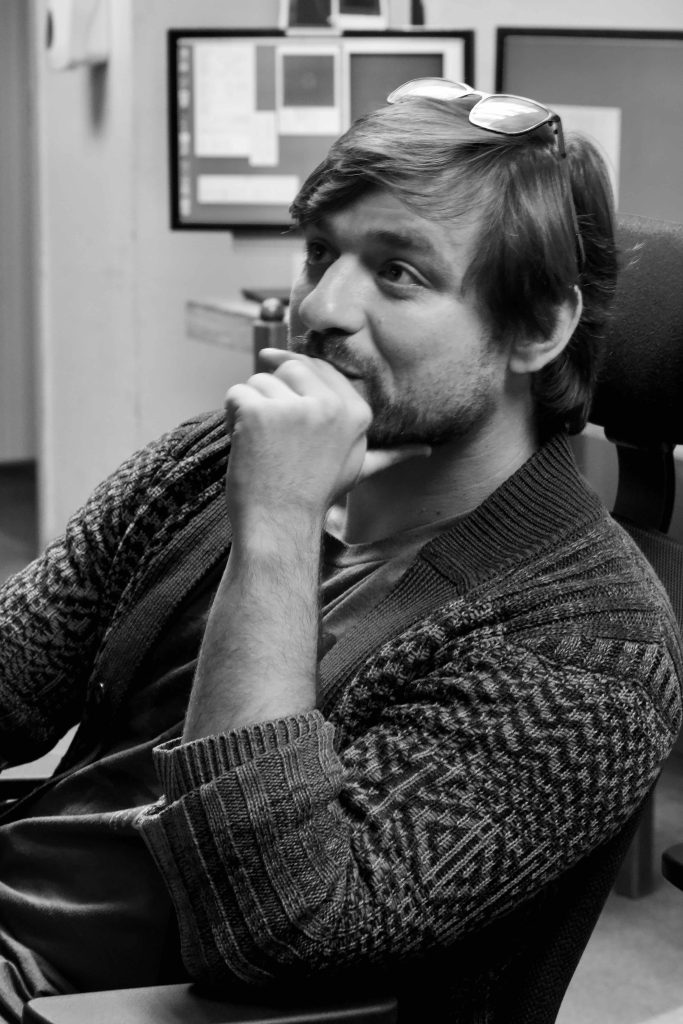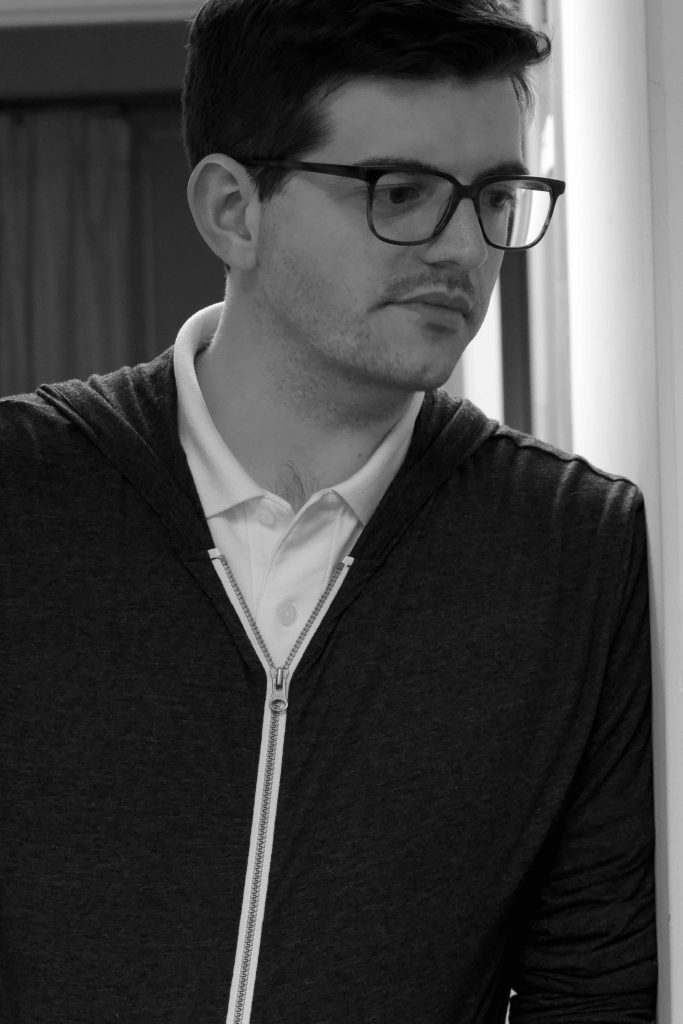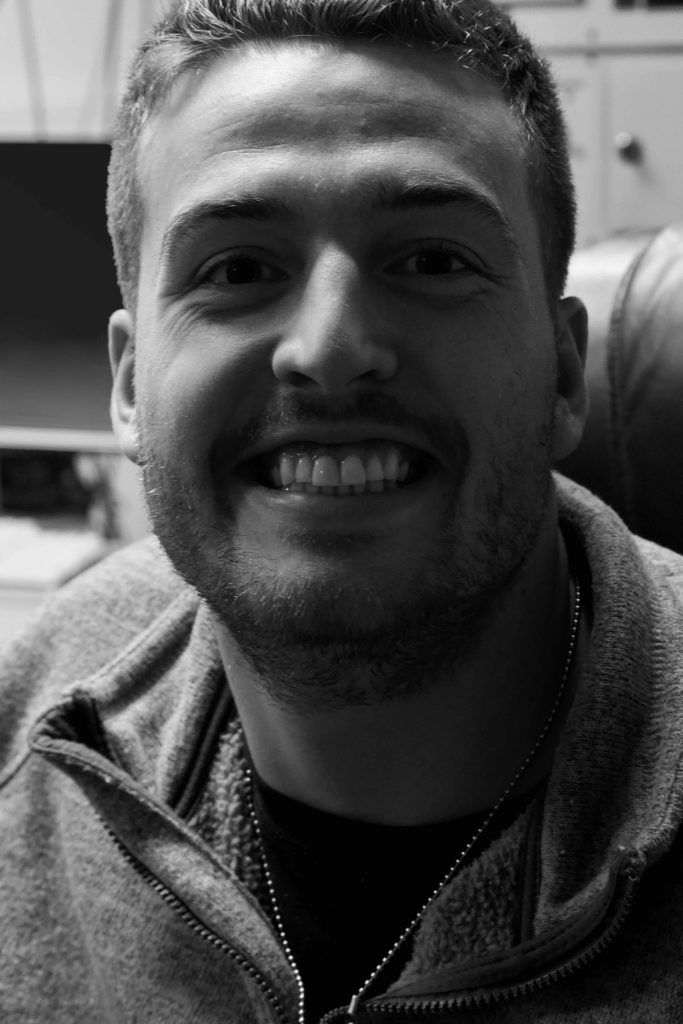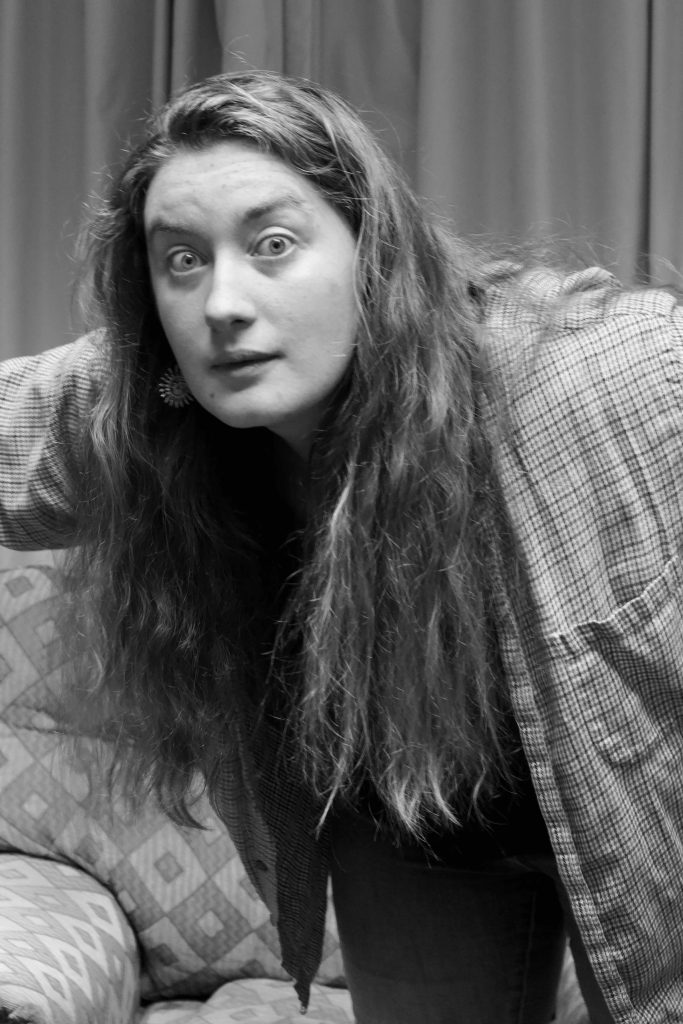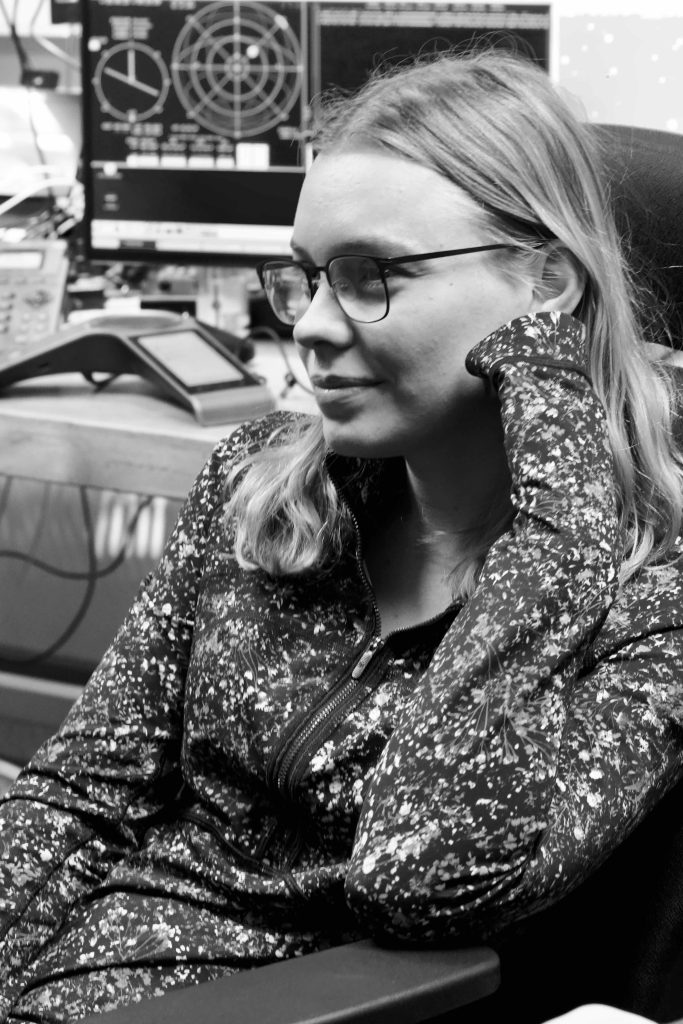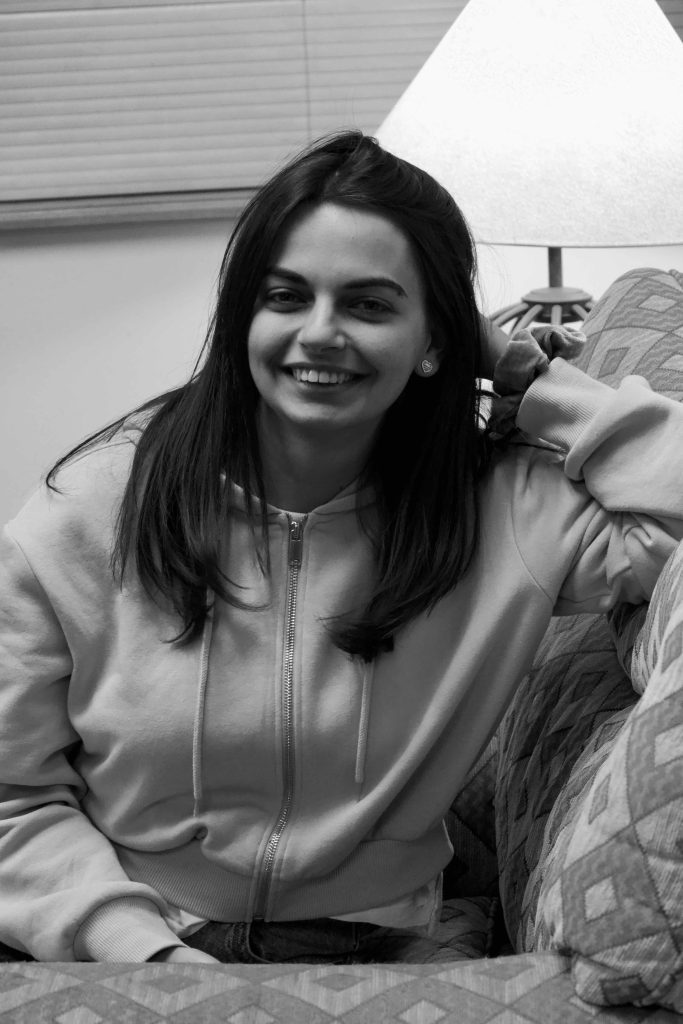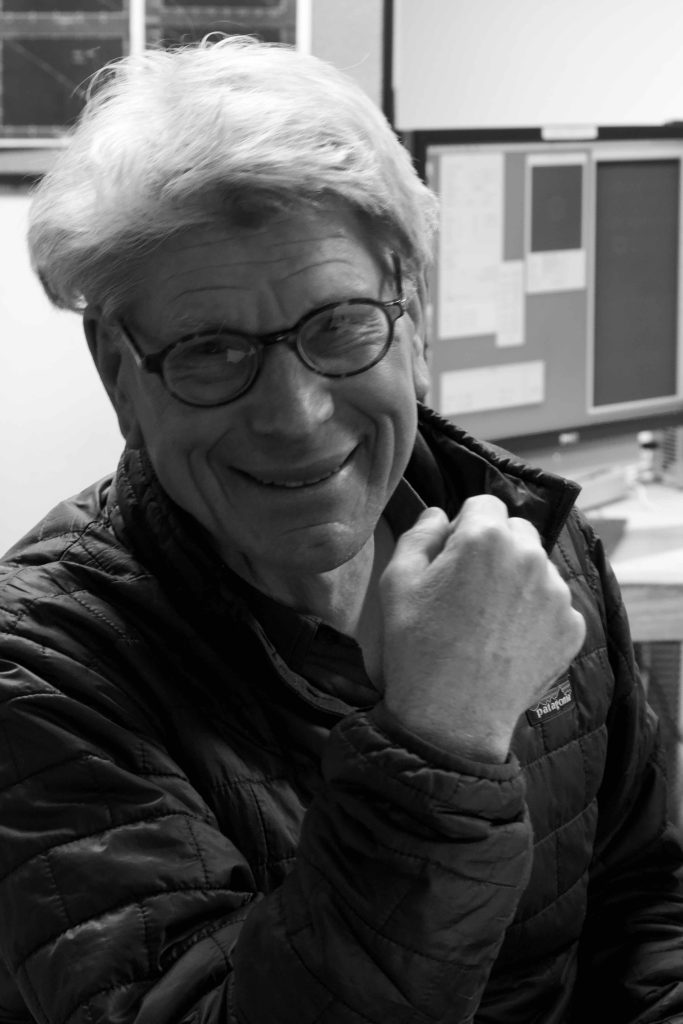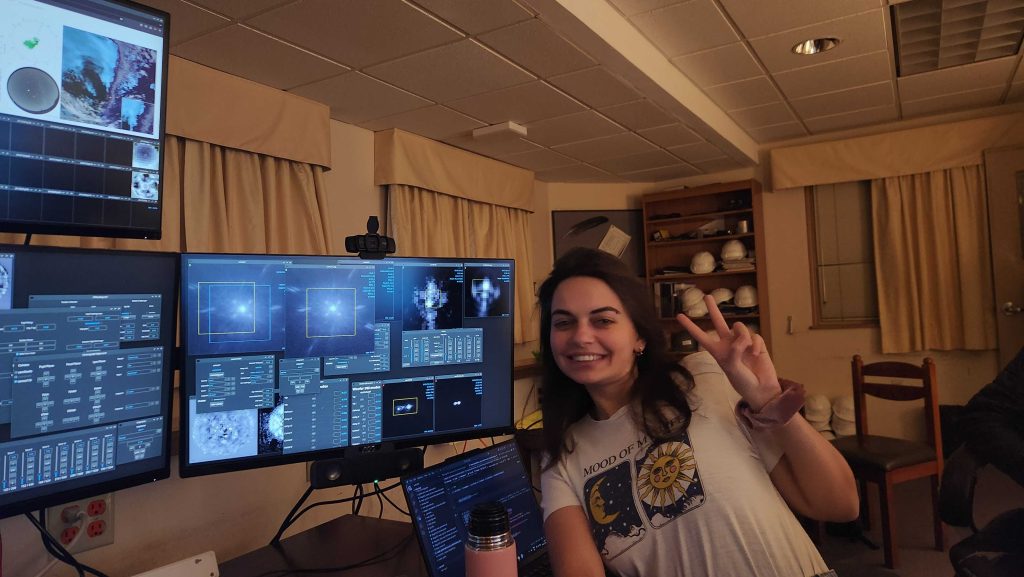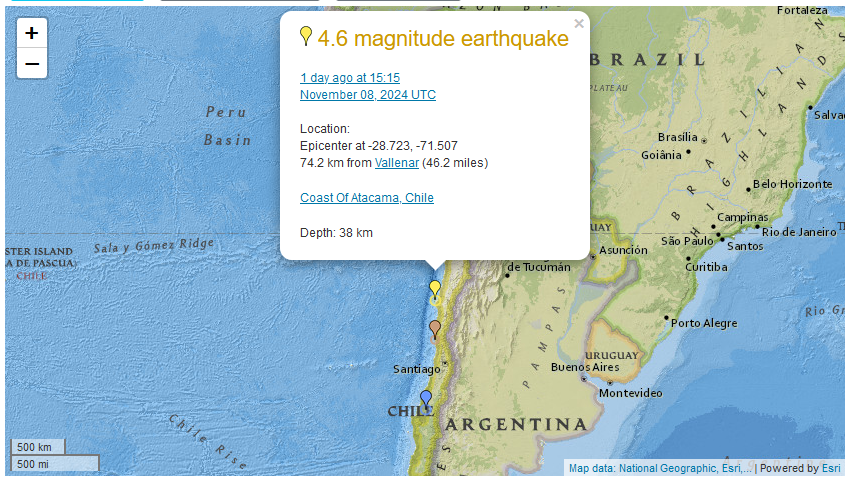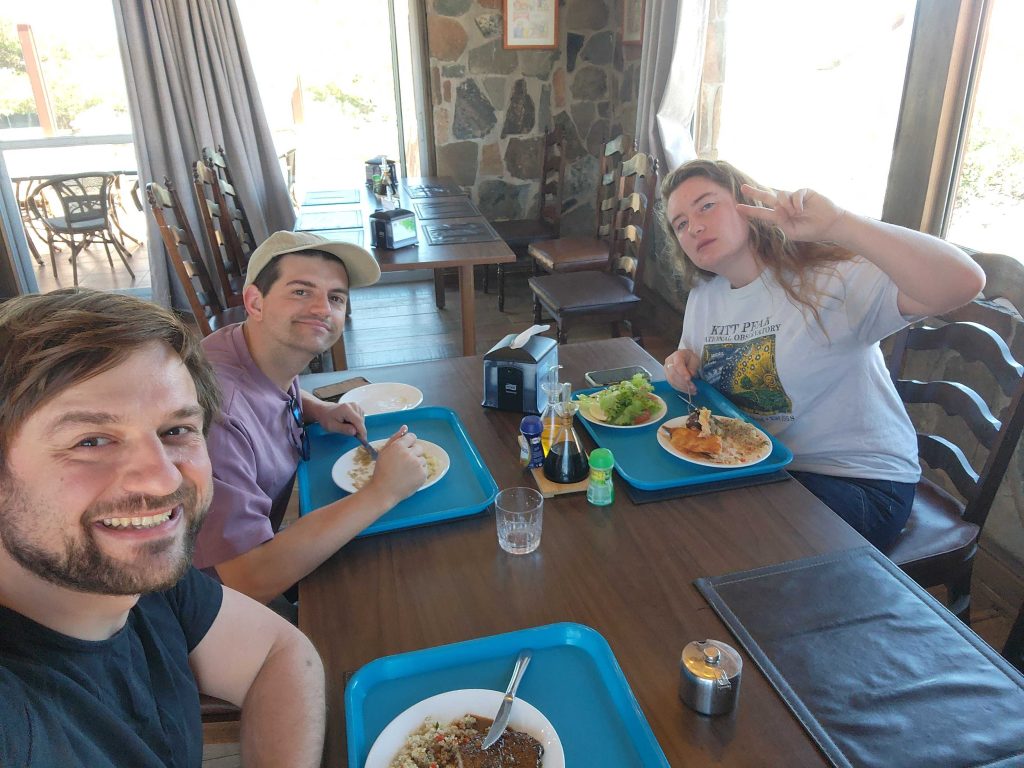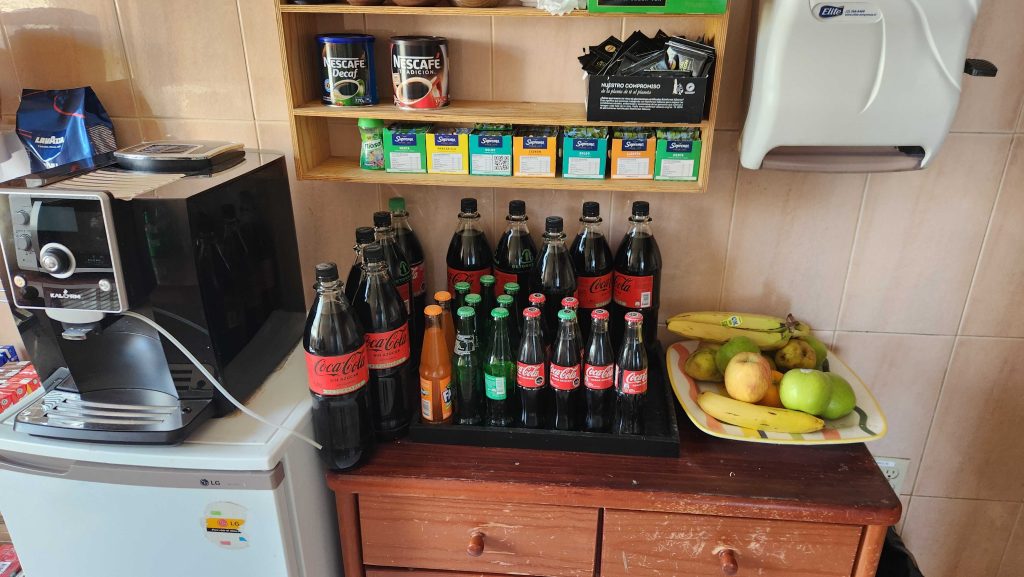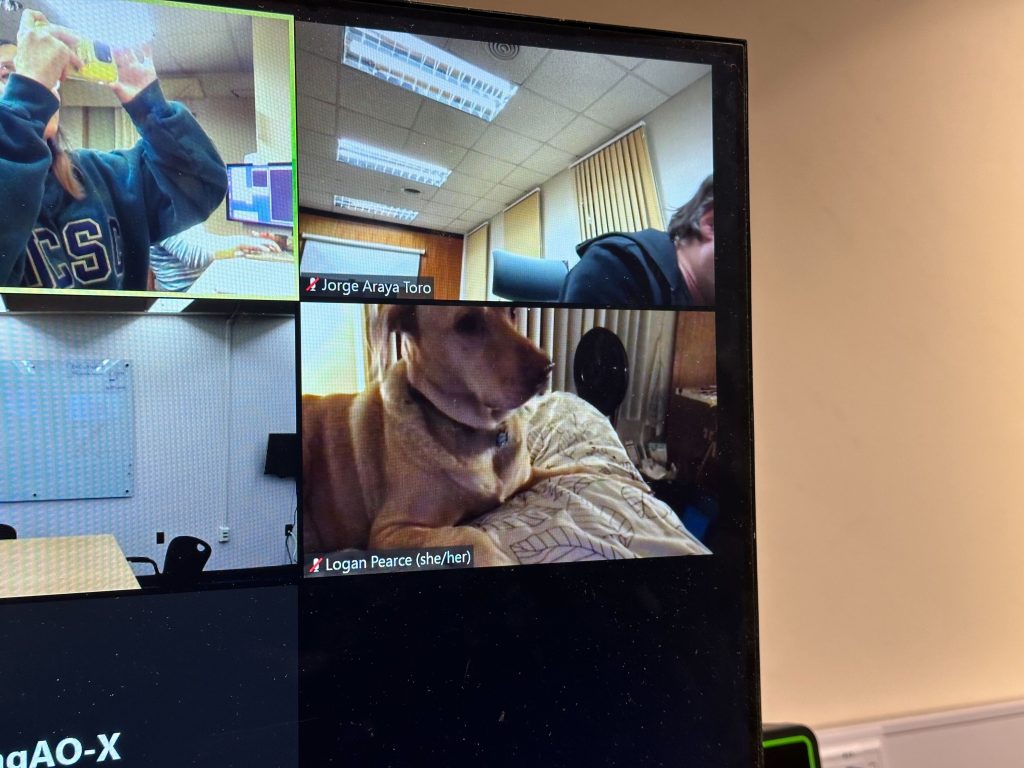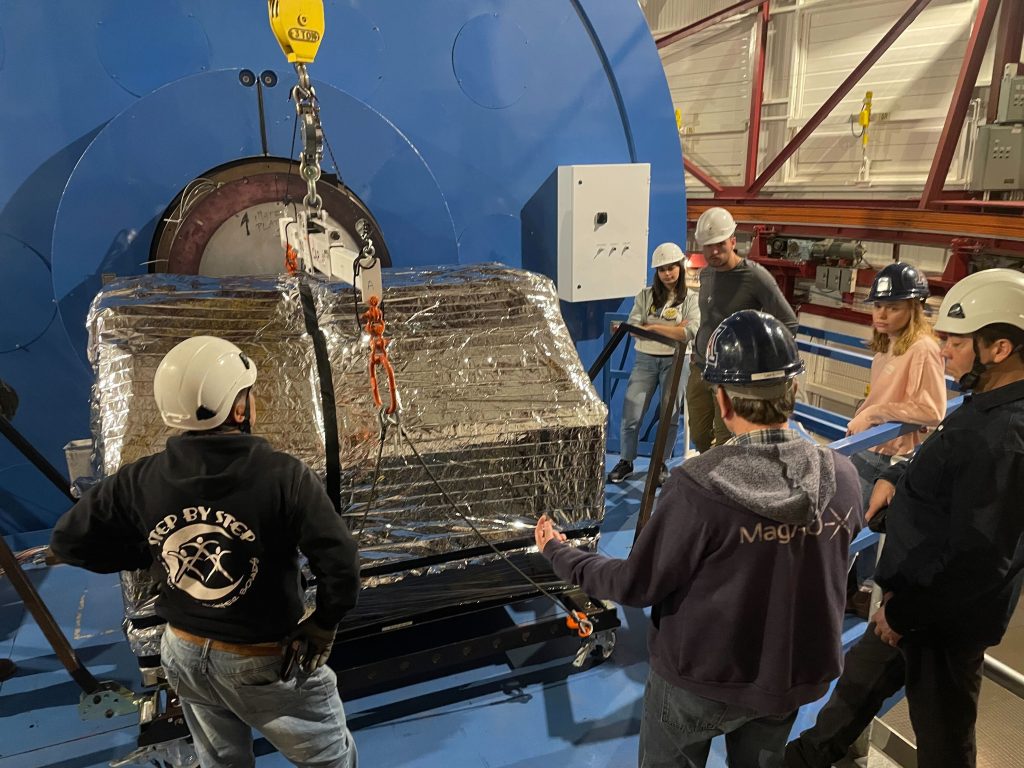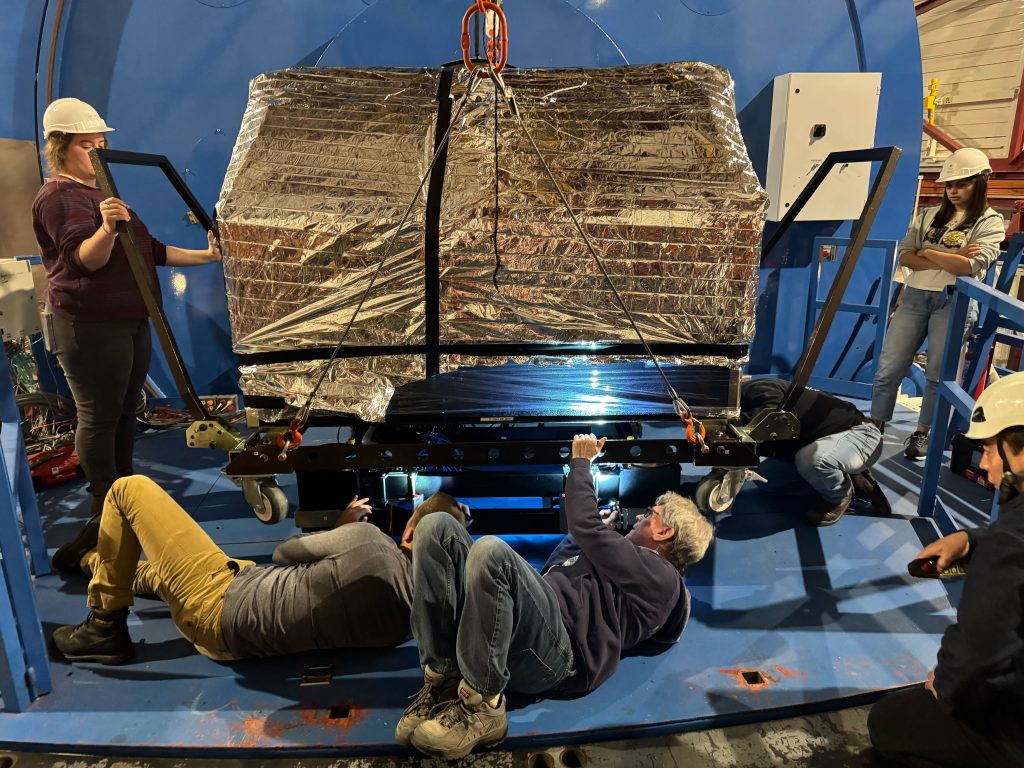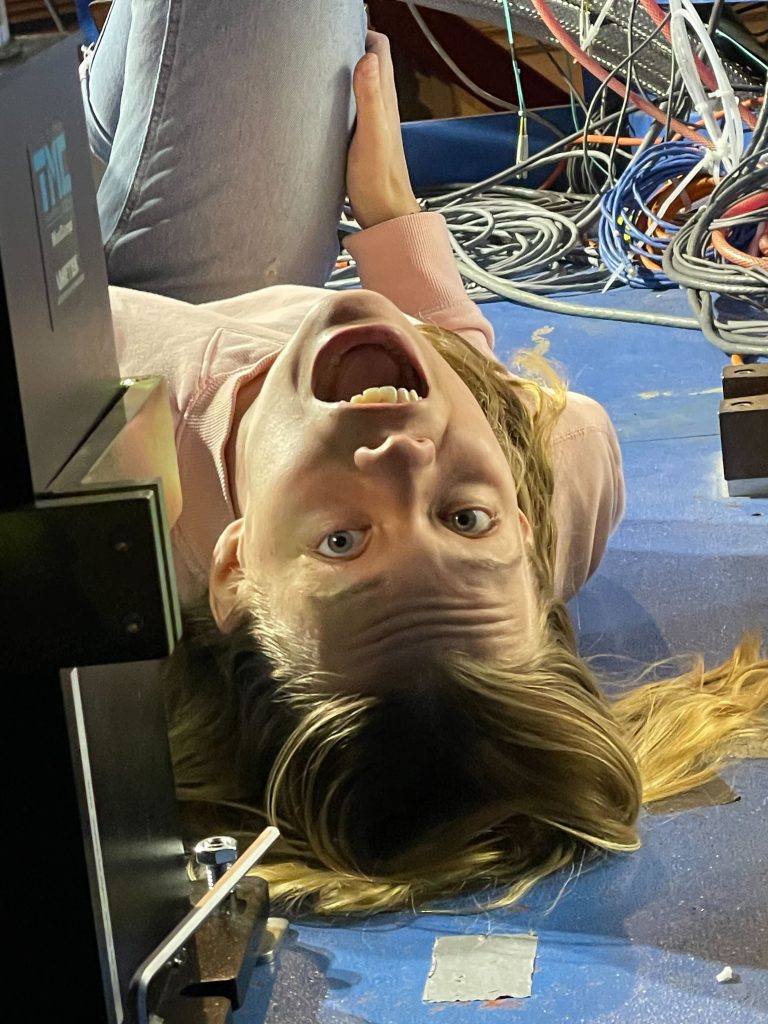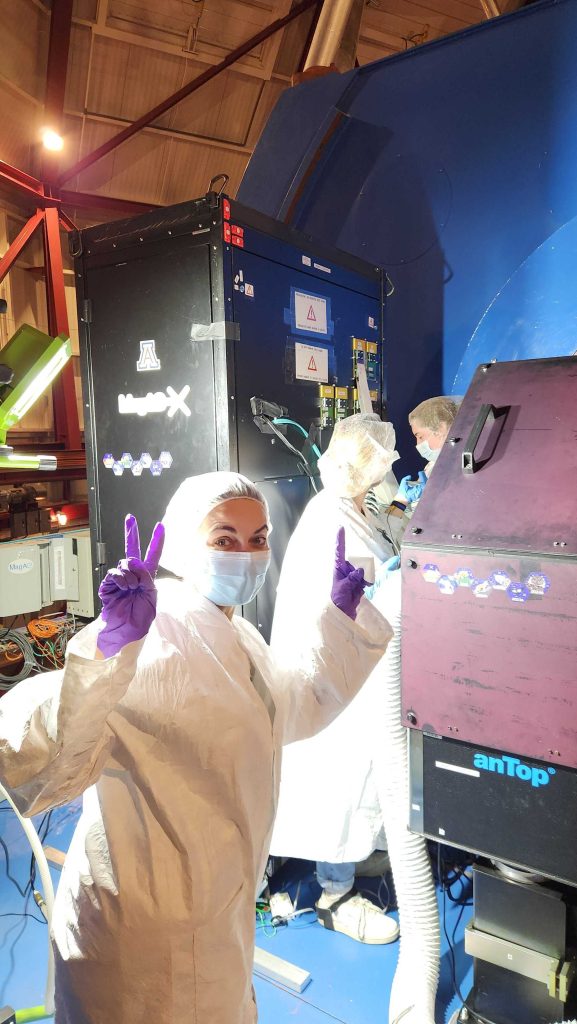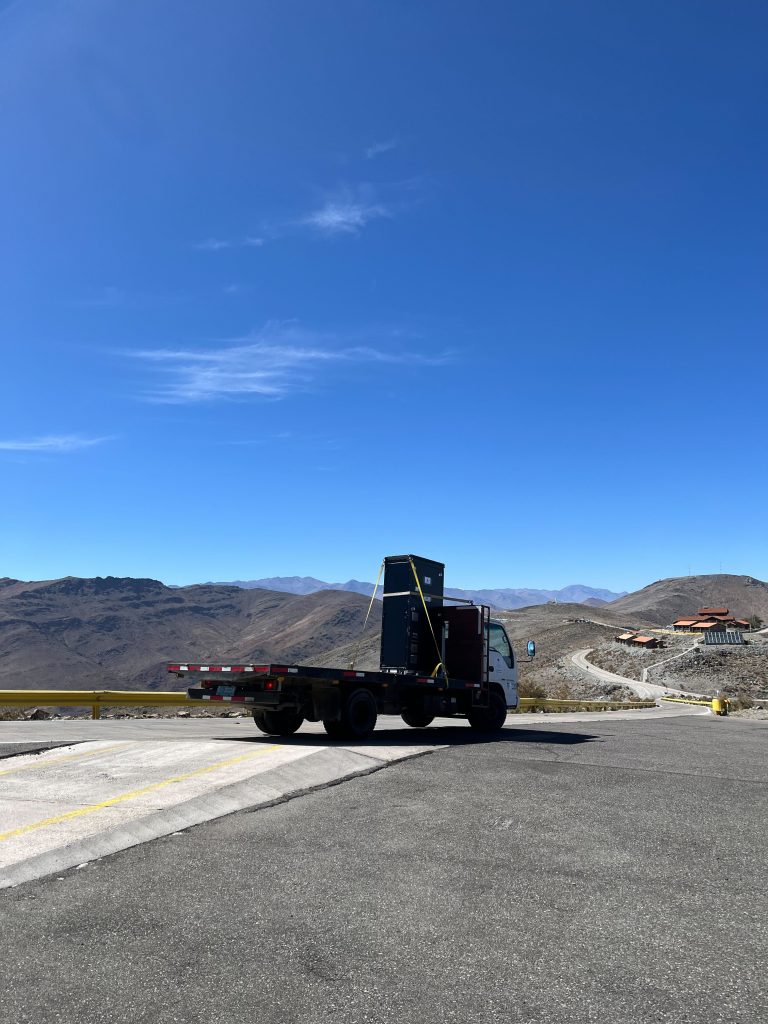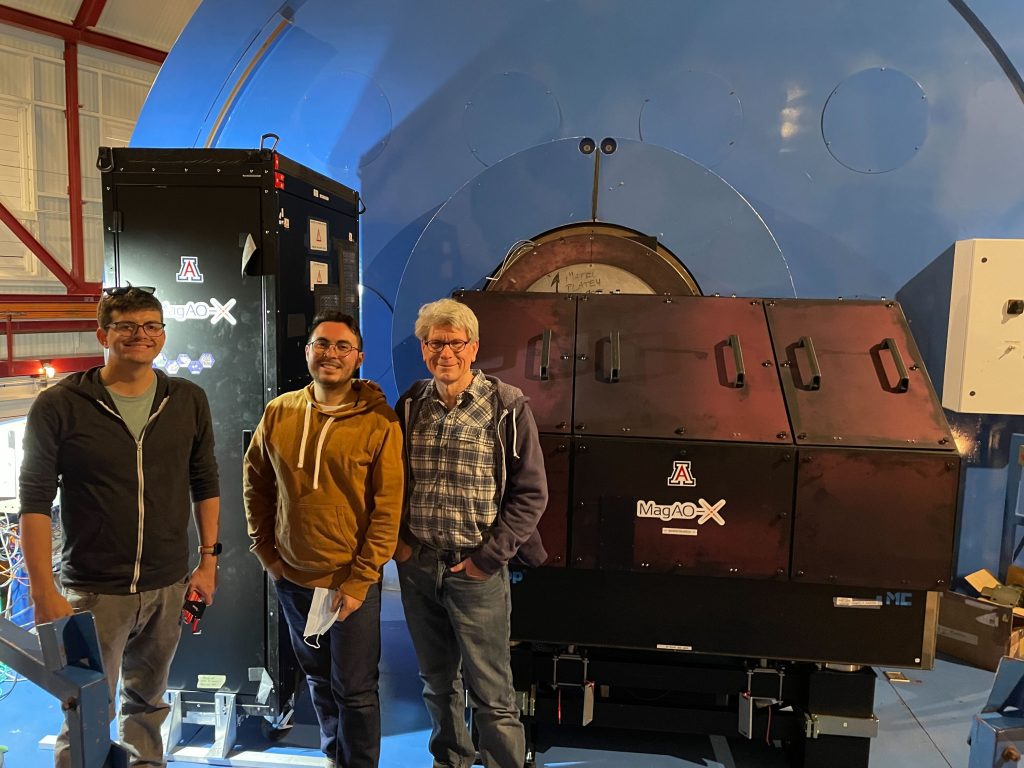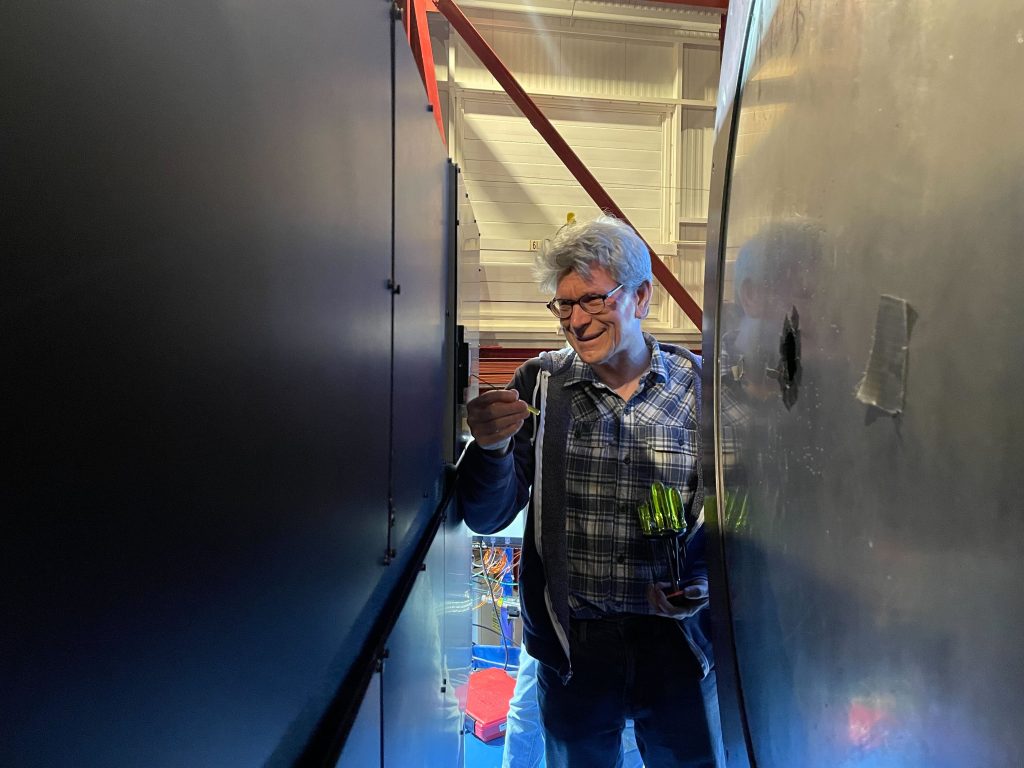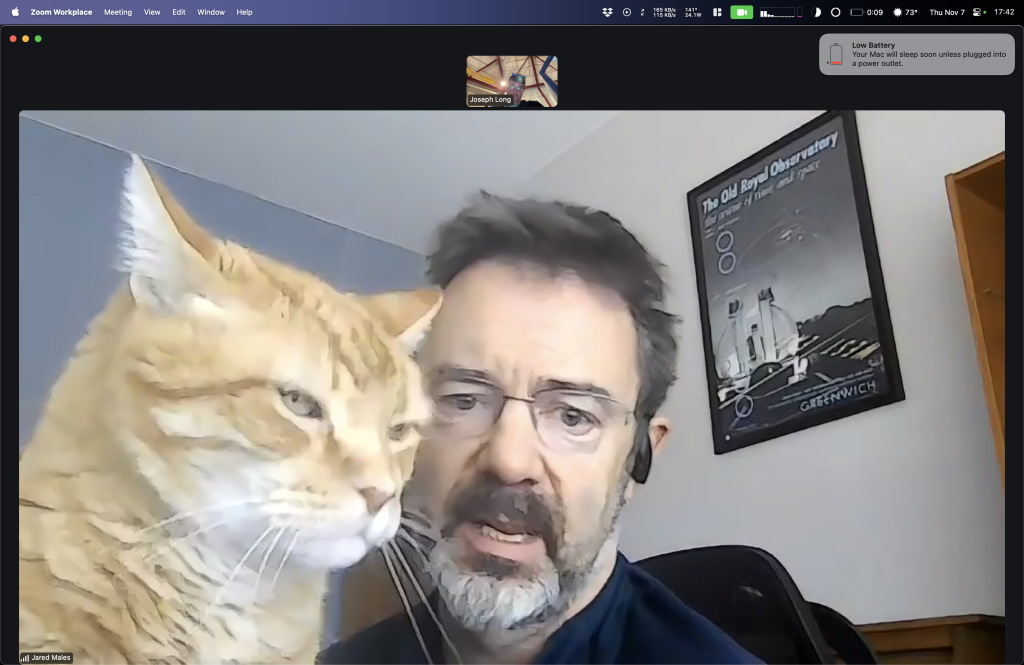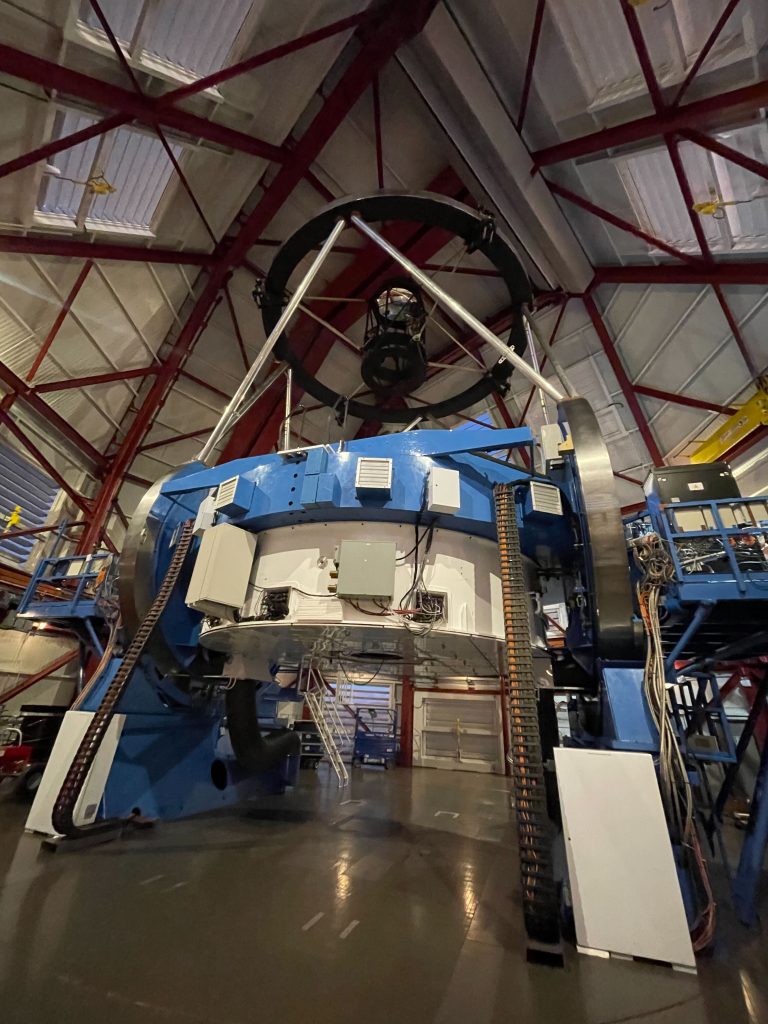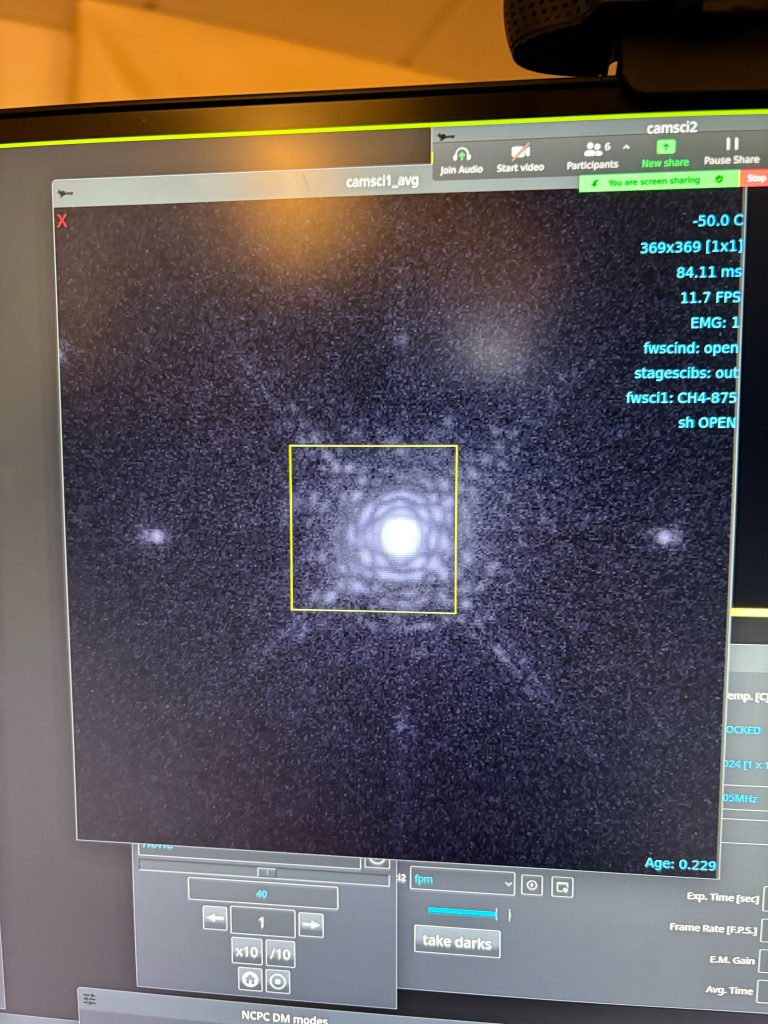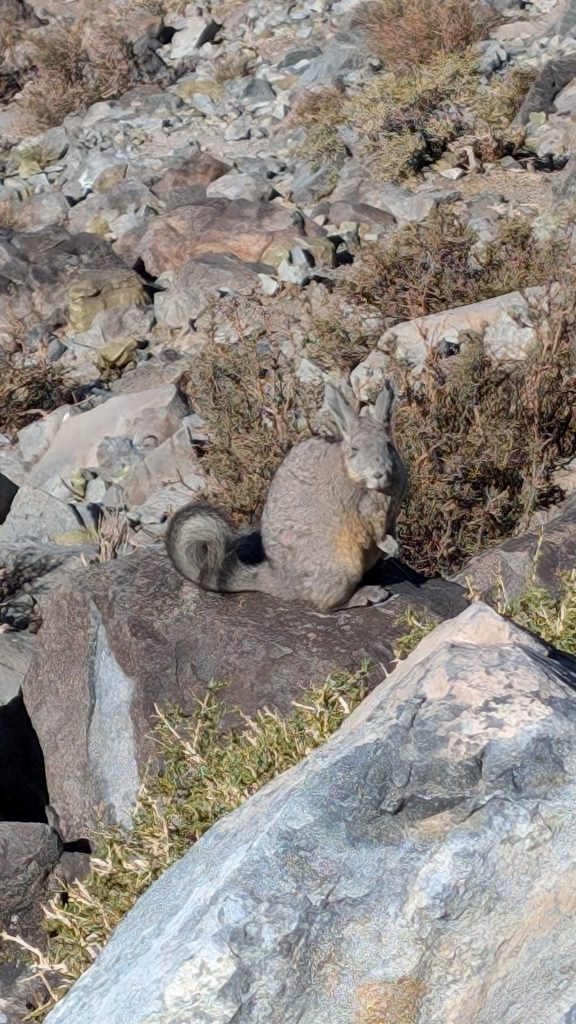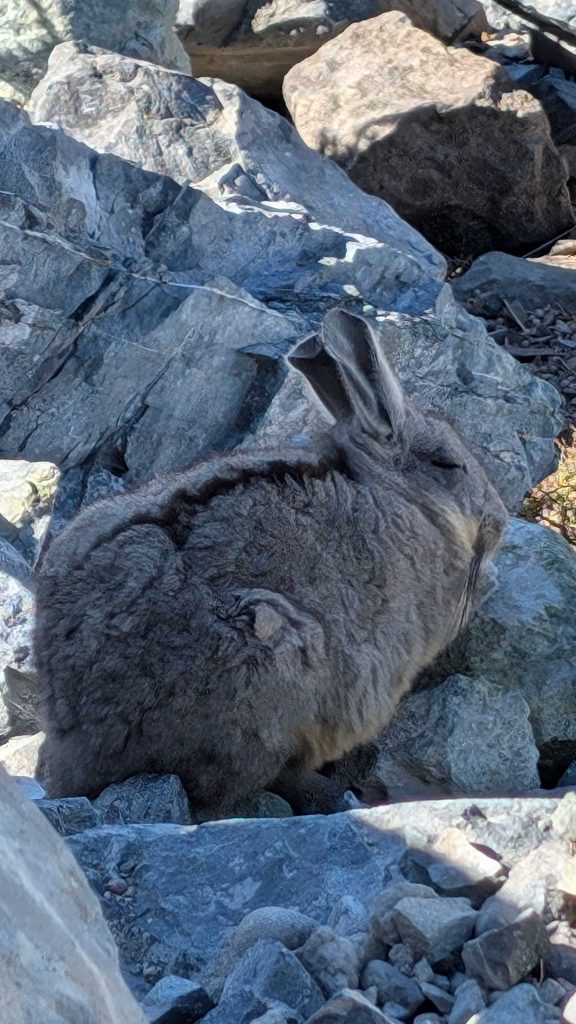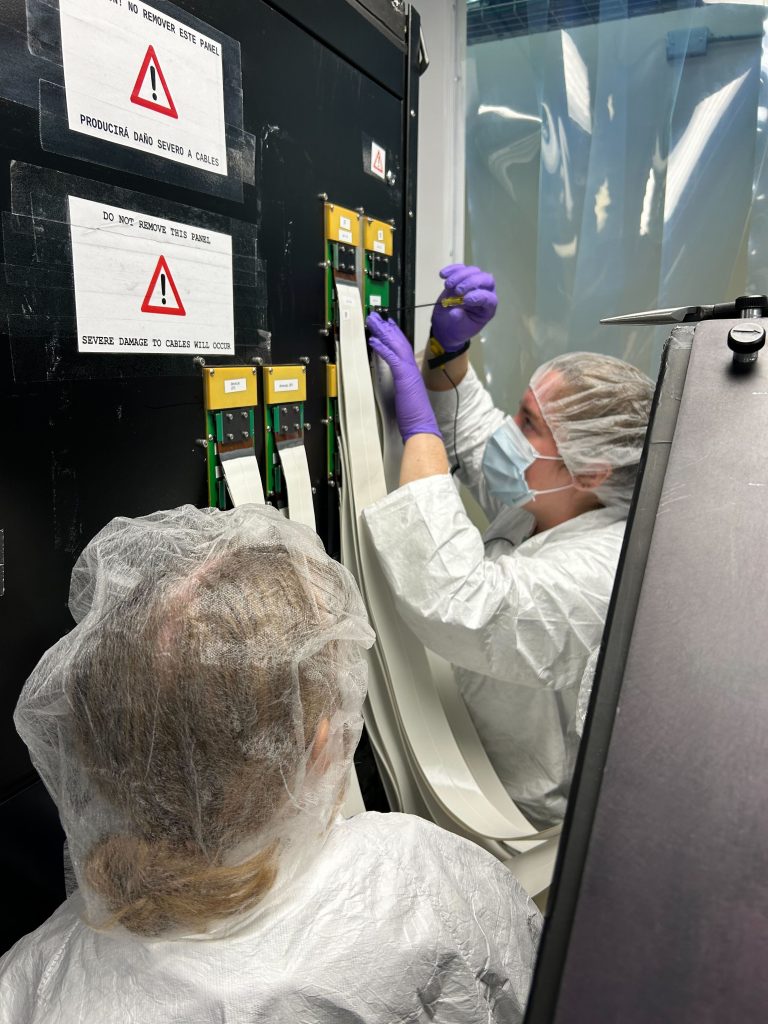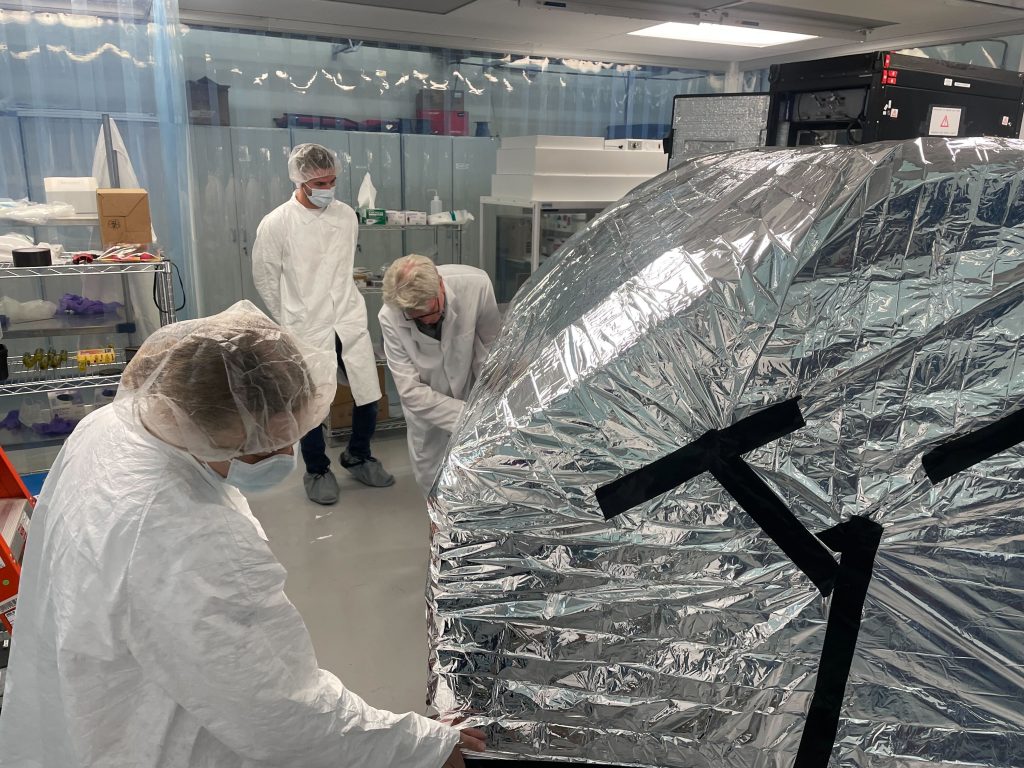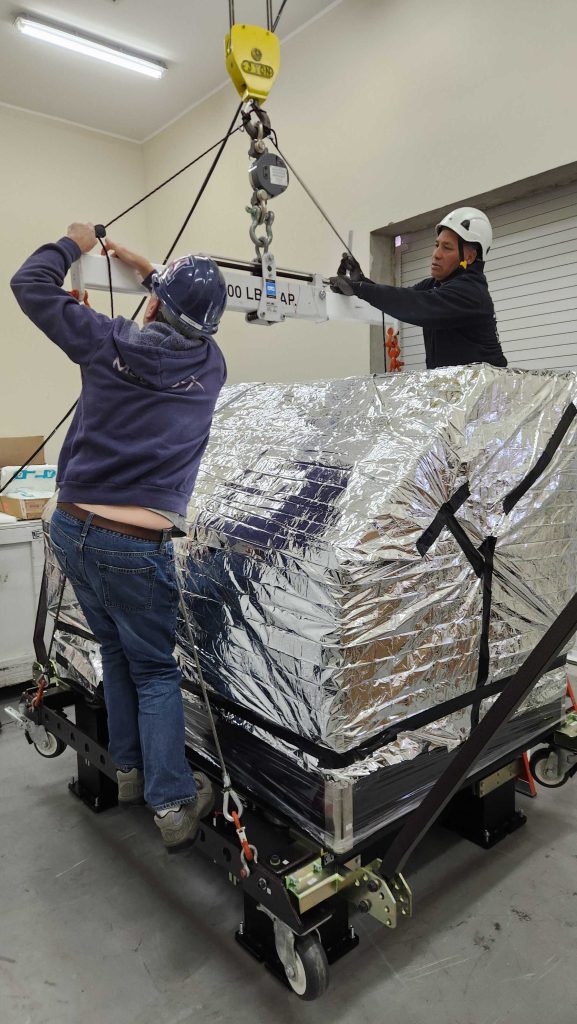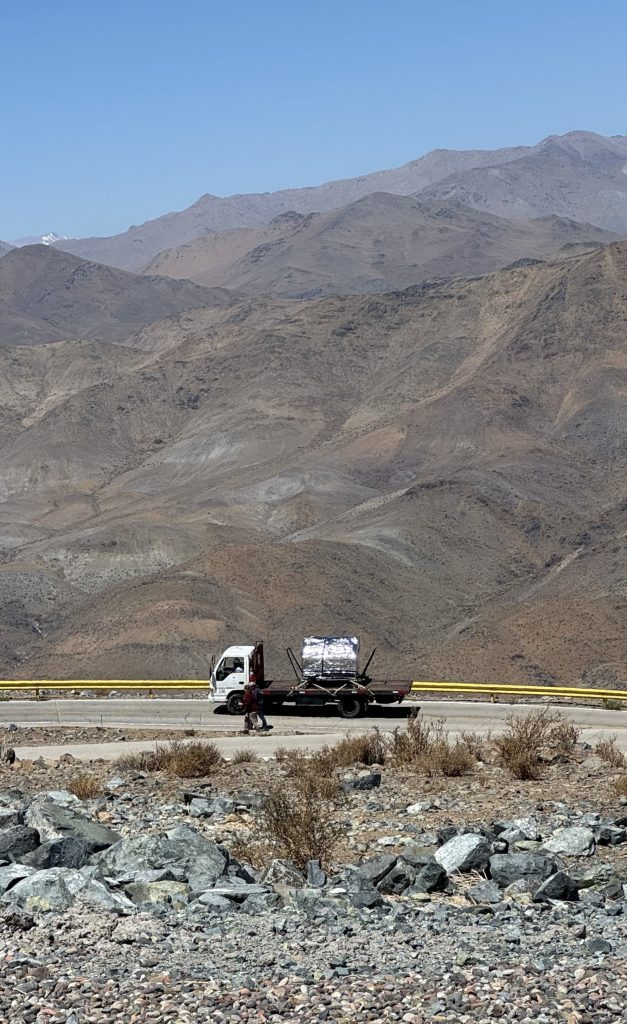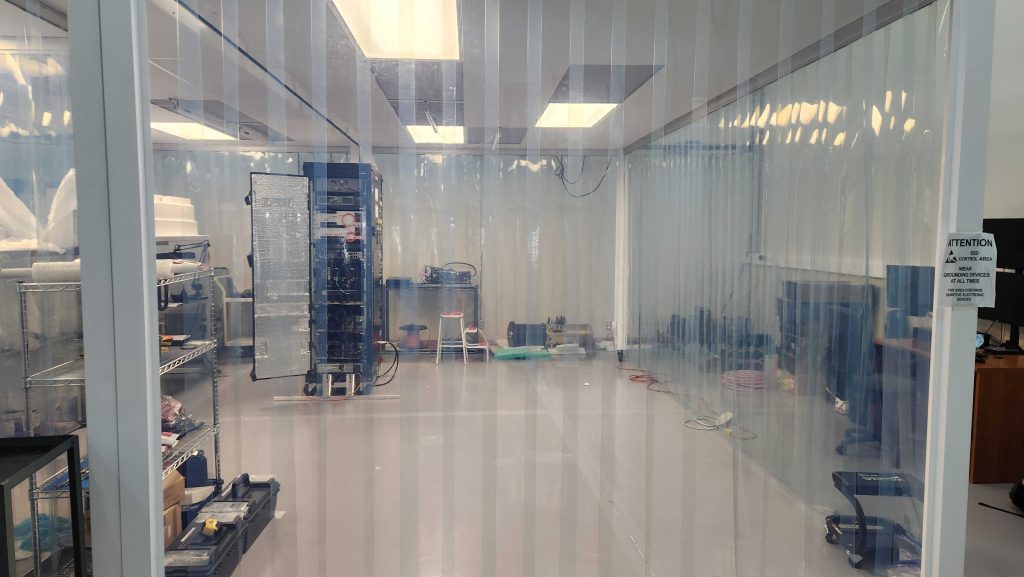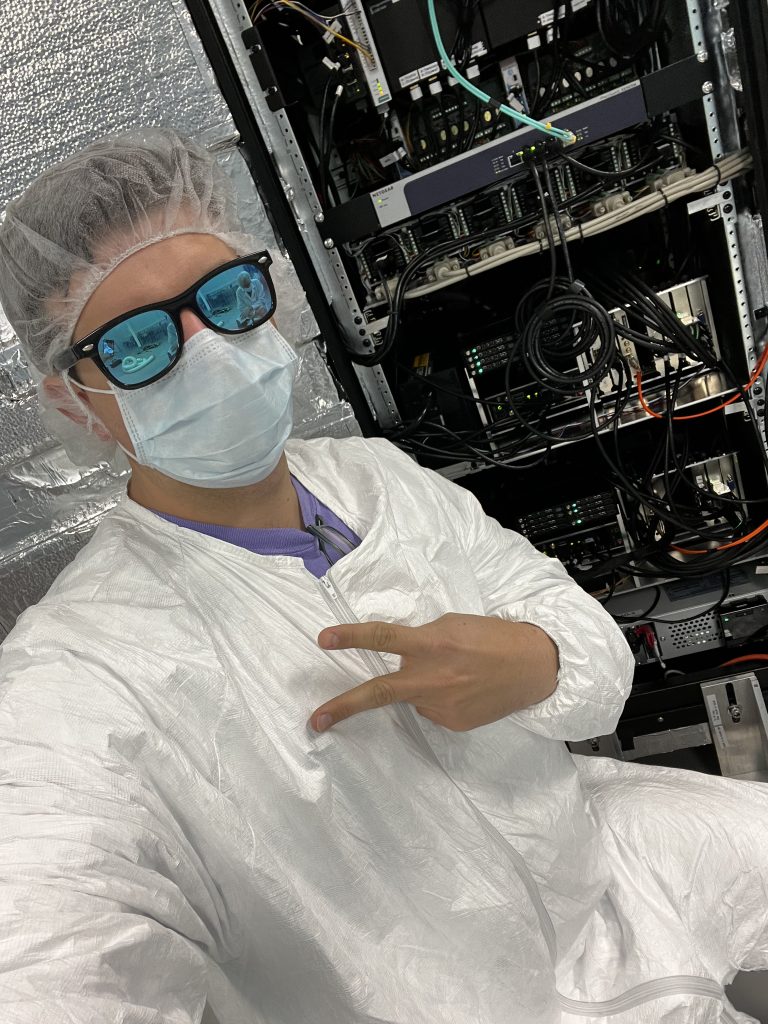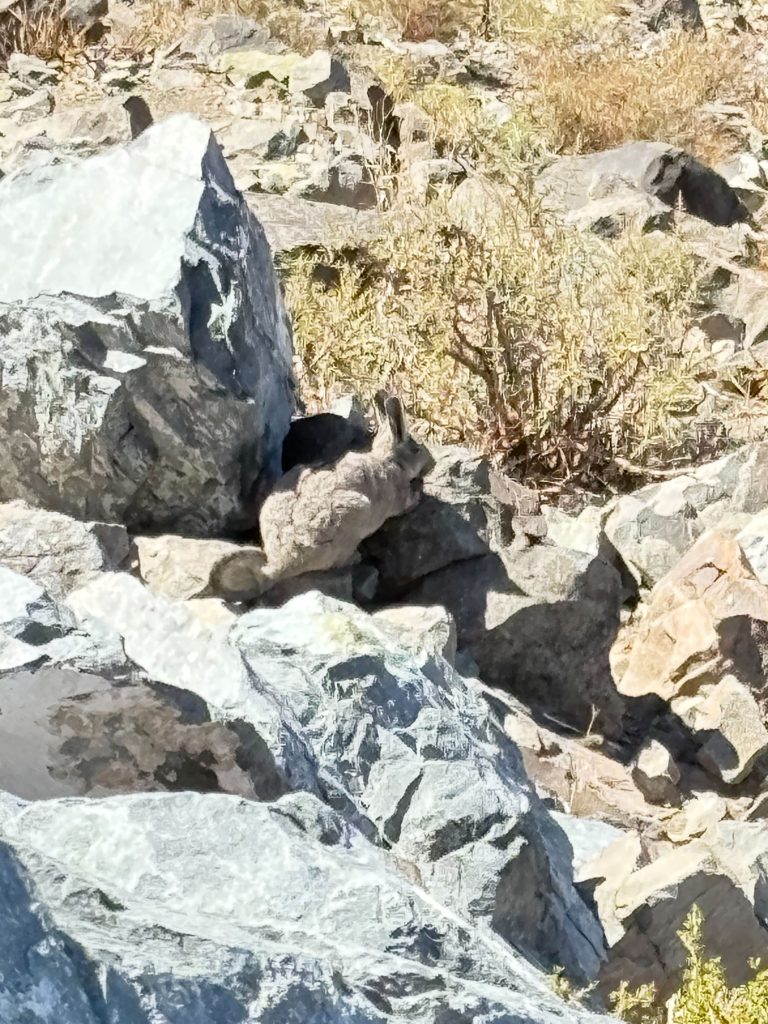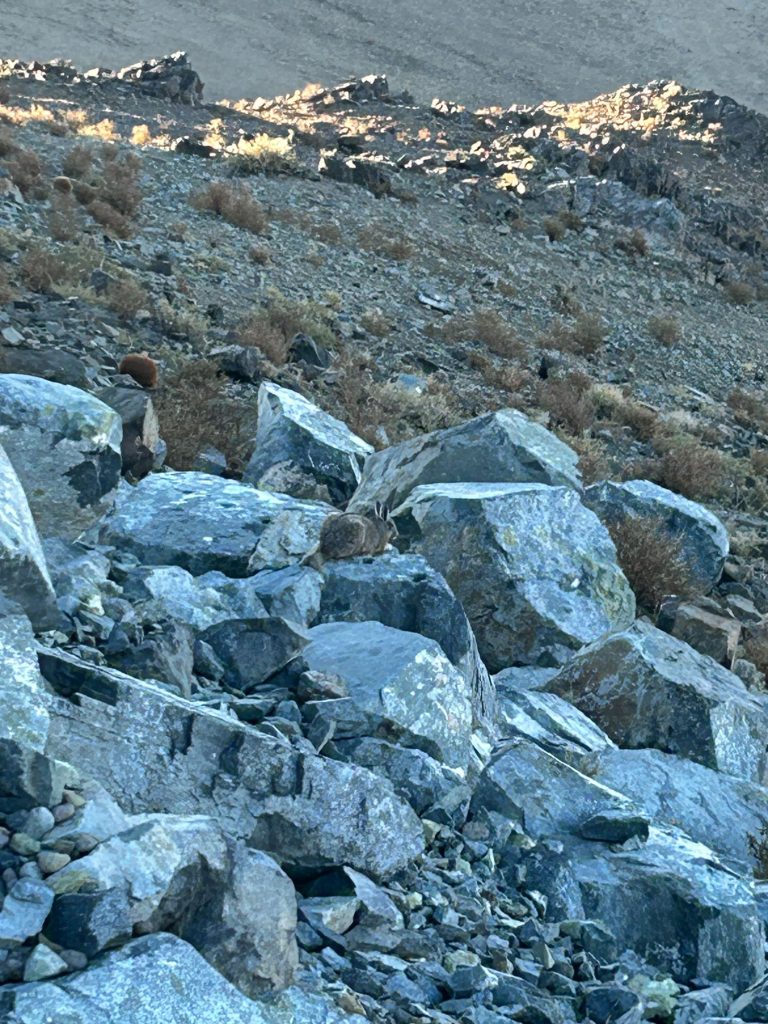With our third car stolen by an unknown observer/animal on the mountain/crew a few days ago, the uber arrangement for our 9 people crew has been a bit tricky. Two brave and kind souls volunteered themselves for a hike up to the telescope, Eden and Katie. They were soon rewarded with spotting of the cutest clean room vizzy on this run (thus far).
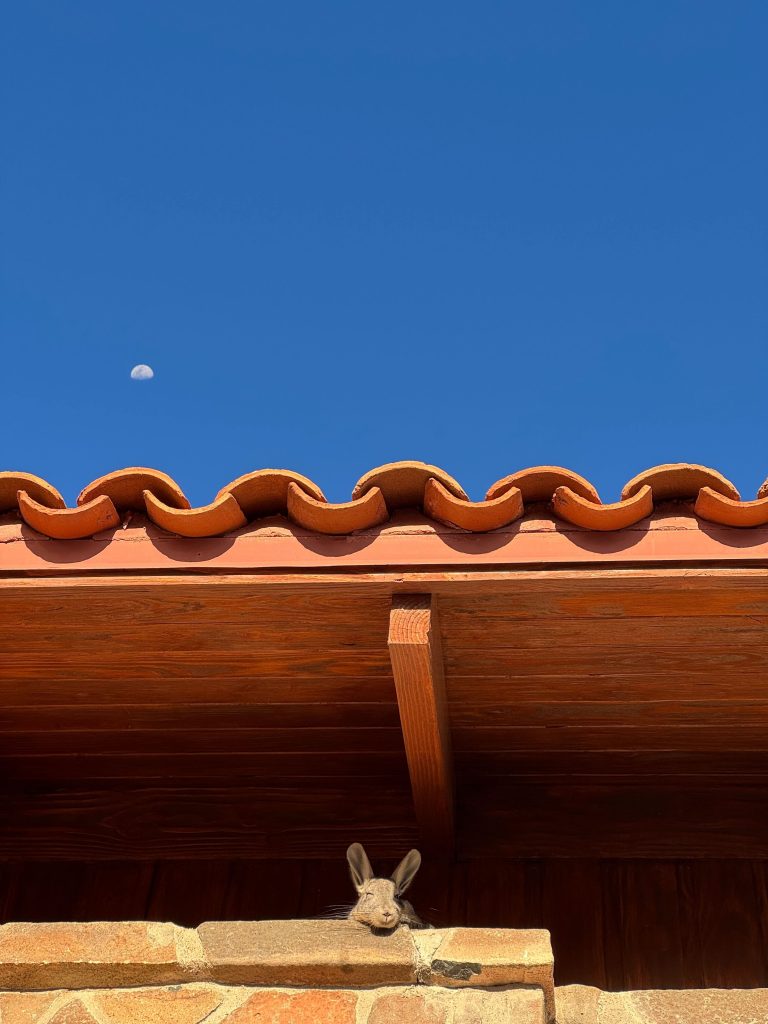
Before the dome opening, the crew added the 24B sticker onto the instrument. (Yeah, we are a lil’ late this run).
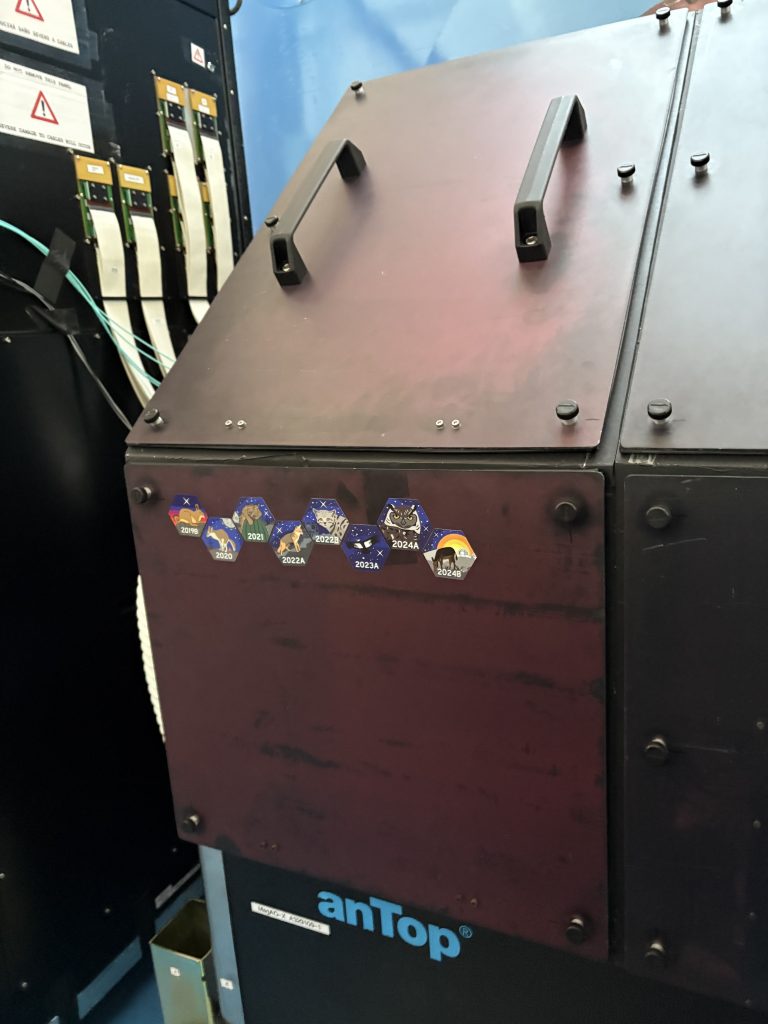
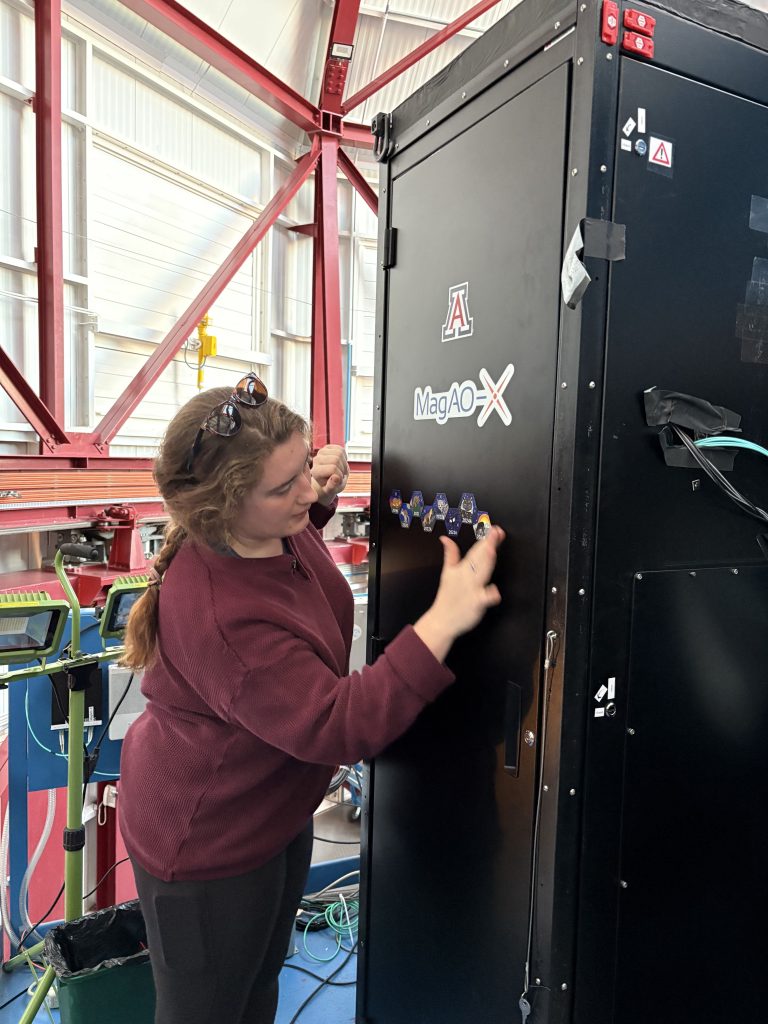
The sunset viewing session proceeded after the “ensticken” ceremony. Parker’s head acted as the coronagraph for the group photo. Please try to call him by his new middle name, “The Vortex”, from now on. The long anticipated green flash was finally captured by human eyes. On video, which was taken by our one and only Professor Close, the flash doesn’t seem to be so green.
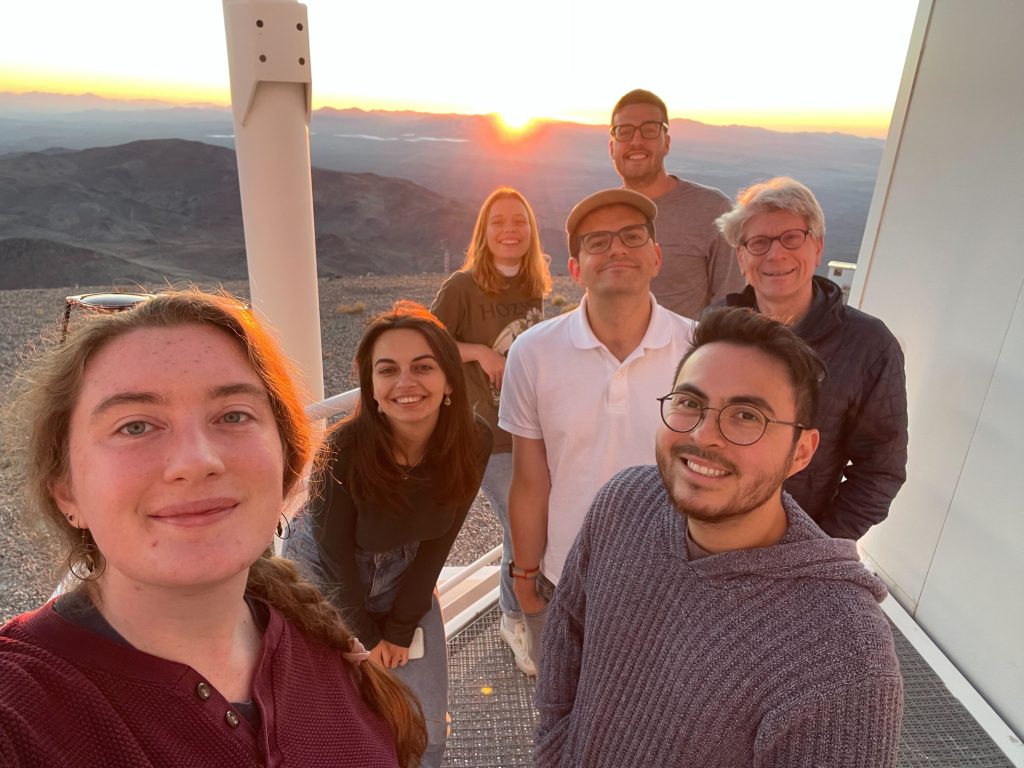
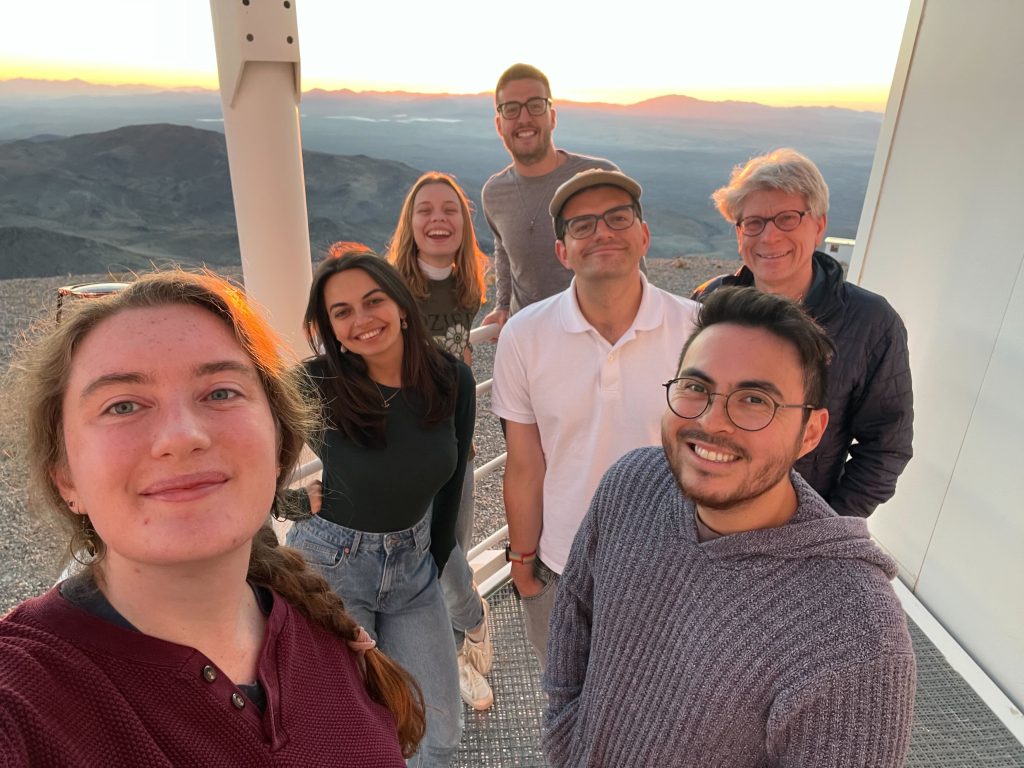
Along with our T.O.’s arrival, a basket full of empanadas entered the kitchen. Whether if the cheese empanadas were deep fried this time around remains a mystery, but they were a lot less greasy, which made it a lot more enjoyable for the meat and non-meat eaters.
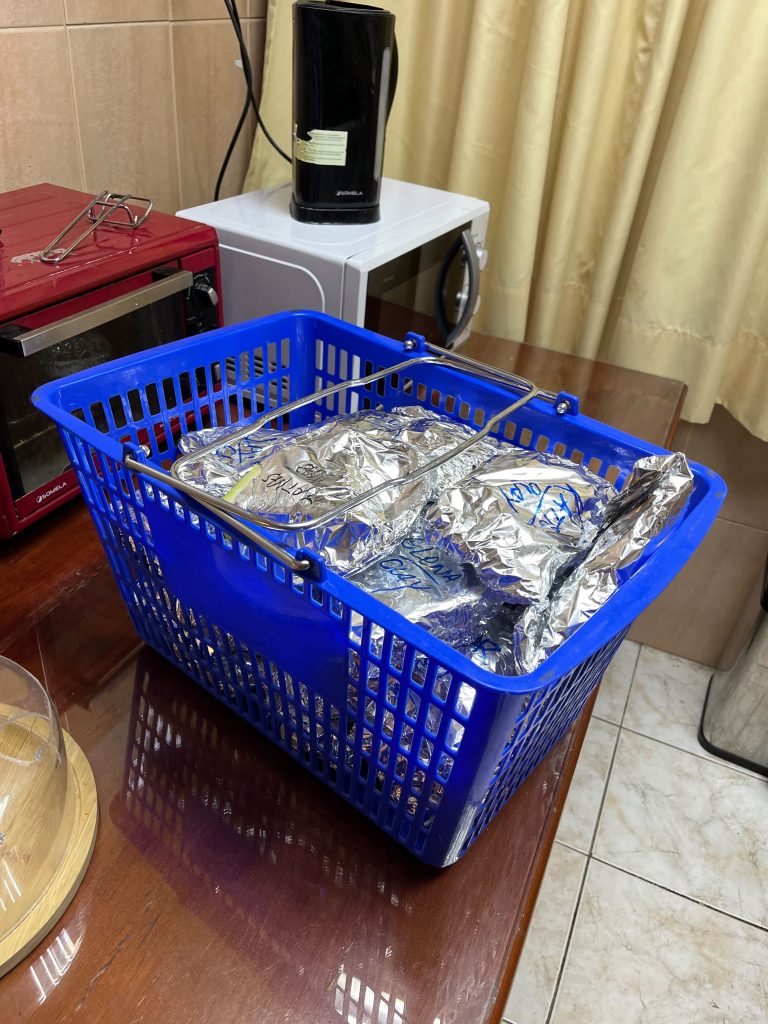
On the science end, the first half of the night was VIS-X time, and Sebastiaan observed quite a few targets in high resolution mode during this time. These data will probably be reduced by one of his current or future grad students, so look out for more MagAO-X papers? The good seeing persisted through the second half of the night, which was an joint collaboration between Jensen (graduate student from MIT) , Gabrielle, and us. We spent the rest of the night observing a protoplantary disk in Halpha.
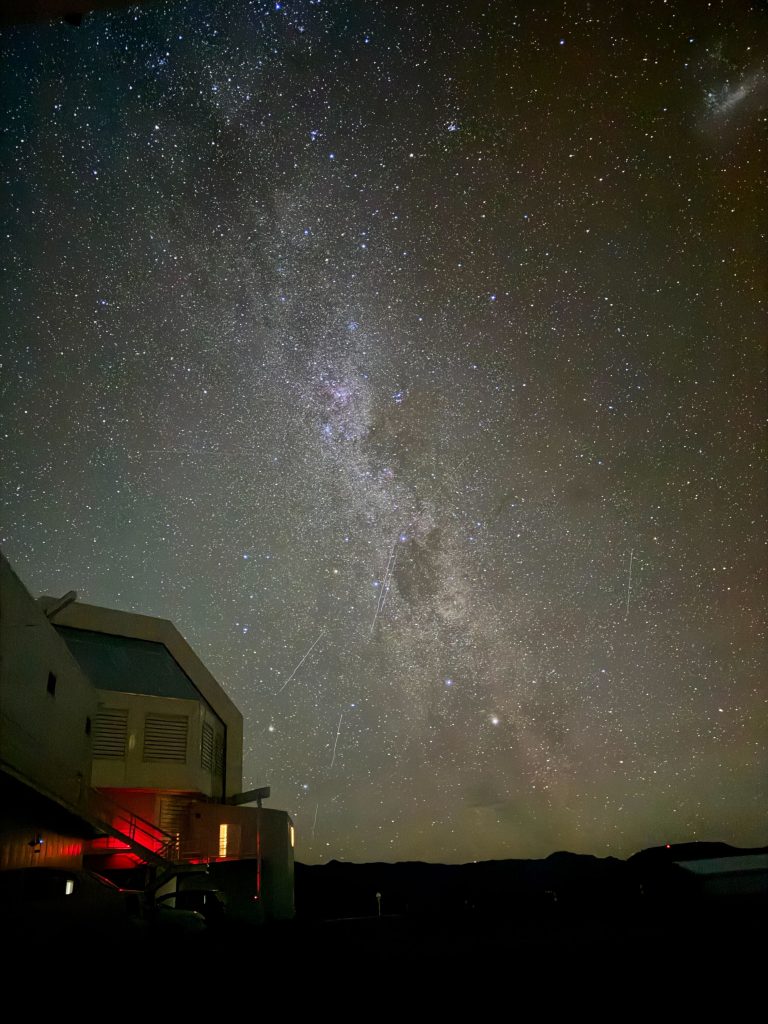
Song of the Day
Since we are now in South America, I have been trying to listen to more music from this continent, particularly pieces by Astor Piazzolla. Per the 24B blog rules, I must include two sentences from the song in the blog post. So here are the lyrics that I like the most:
“Y canto un tango que nadie jamás cantó
y sueño un sueño que nadie jamás soñó,
porque el mañana es hoy con el ayer después, che!”
As a non-Spanish speaker, I won’t attempt to translate for you. I would suggest a google search instead.
